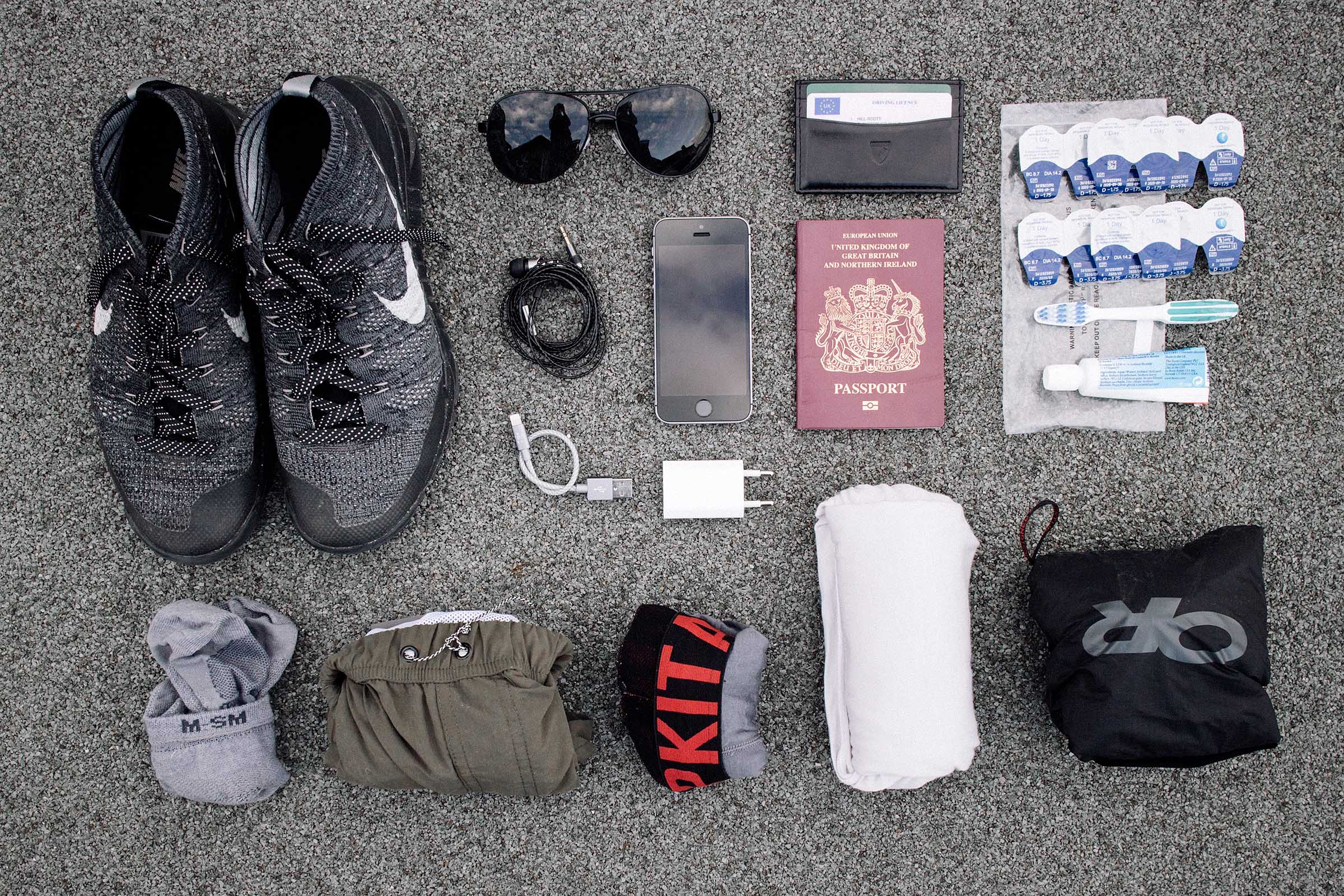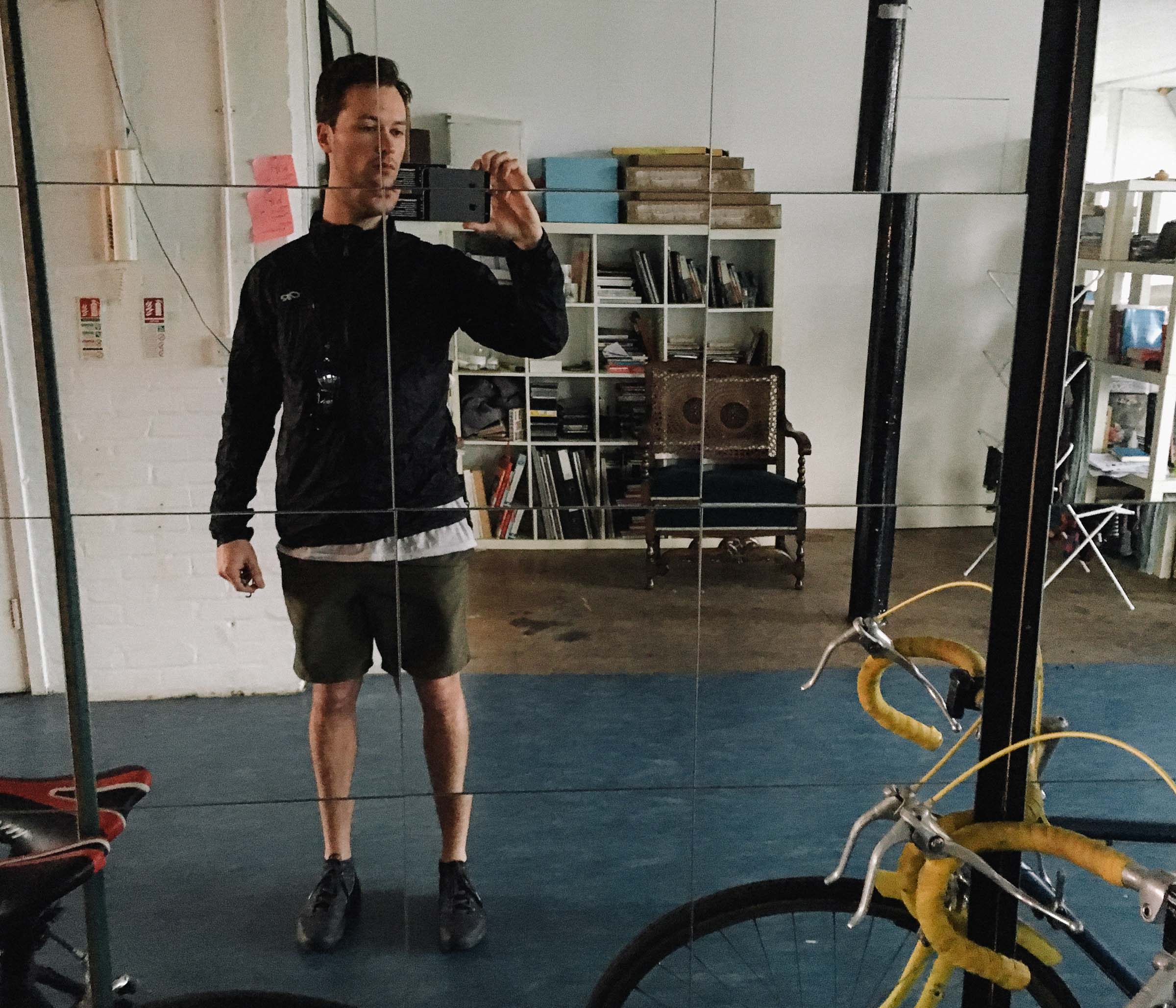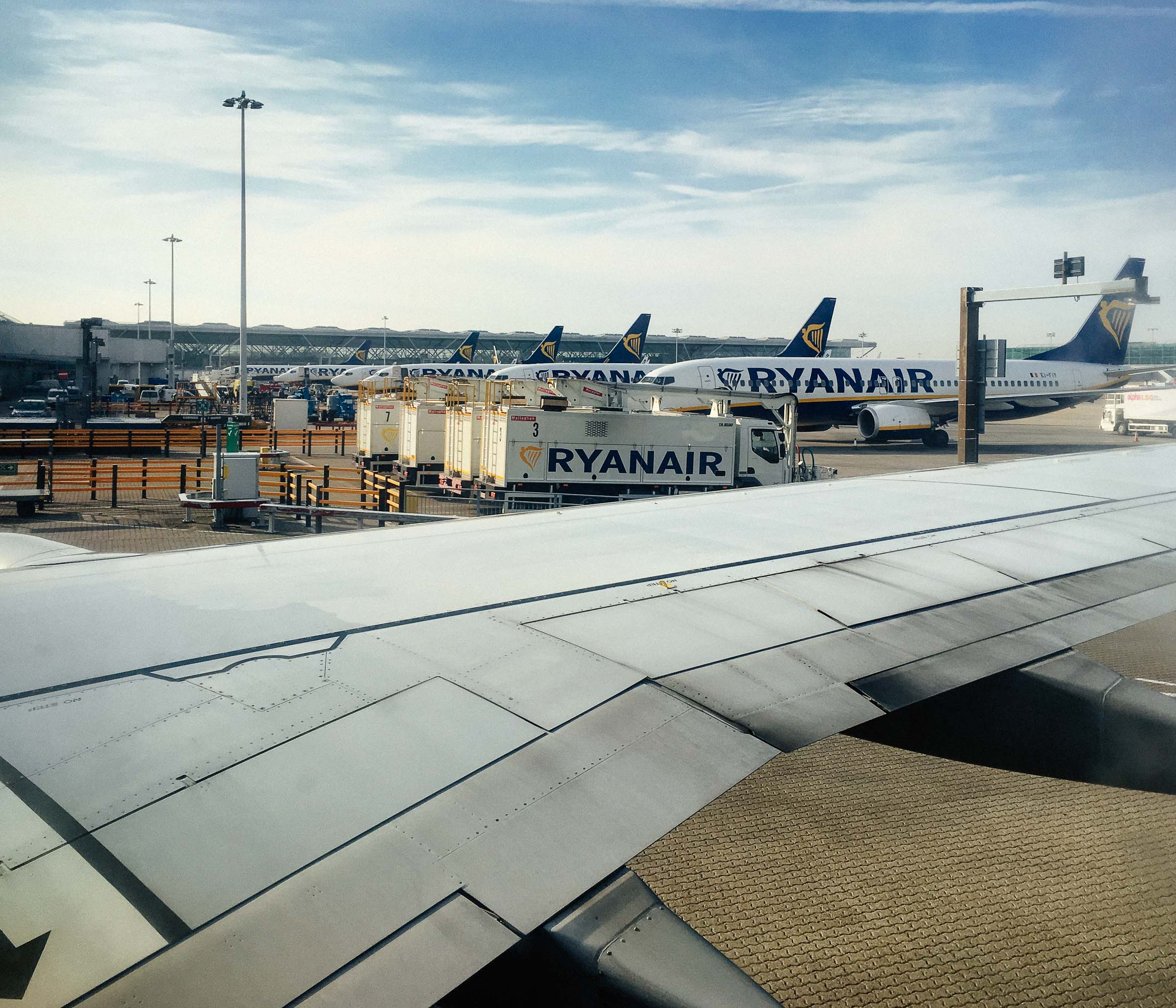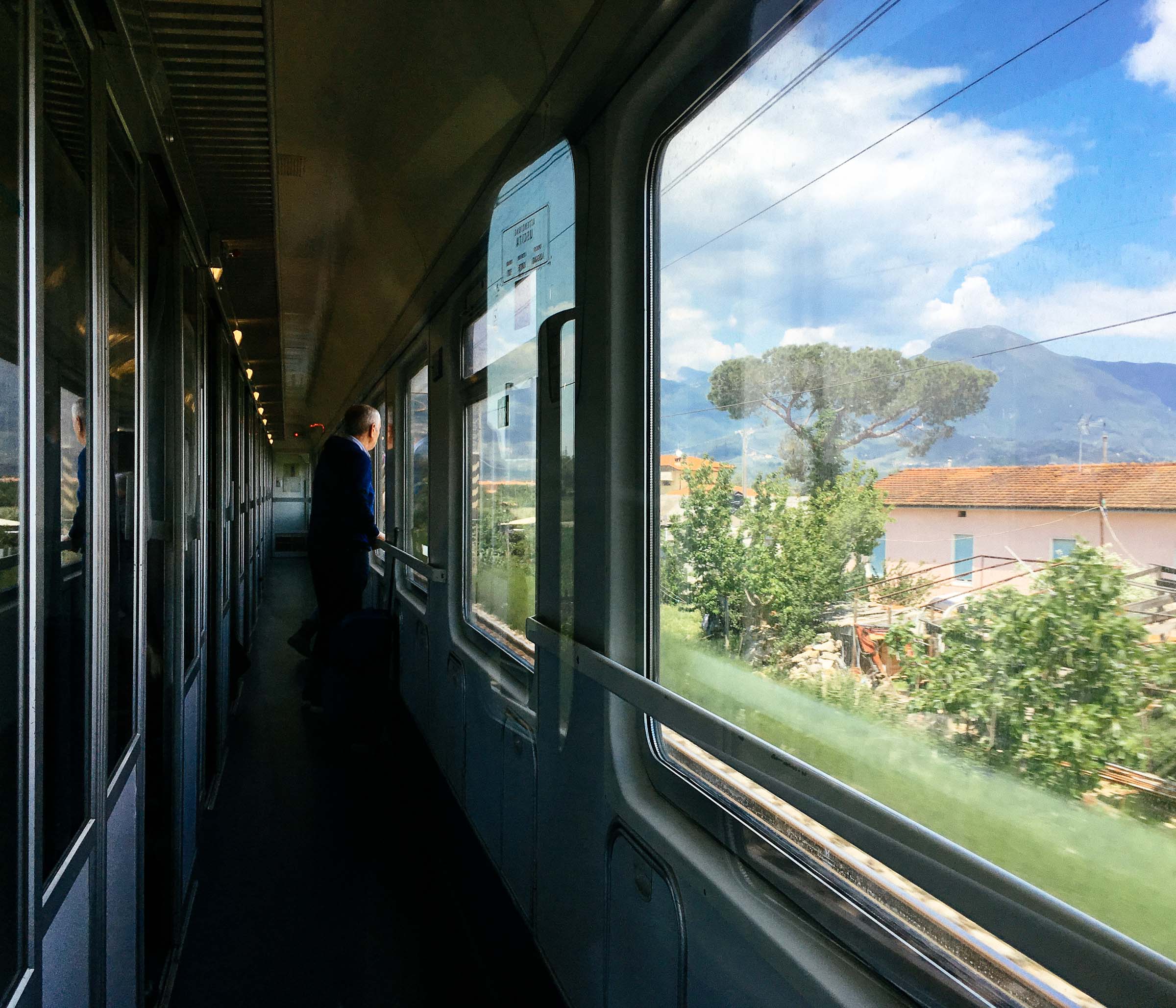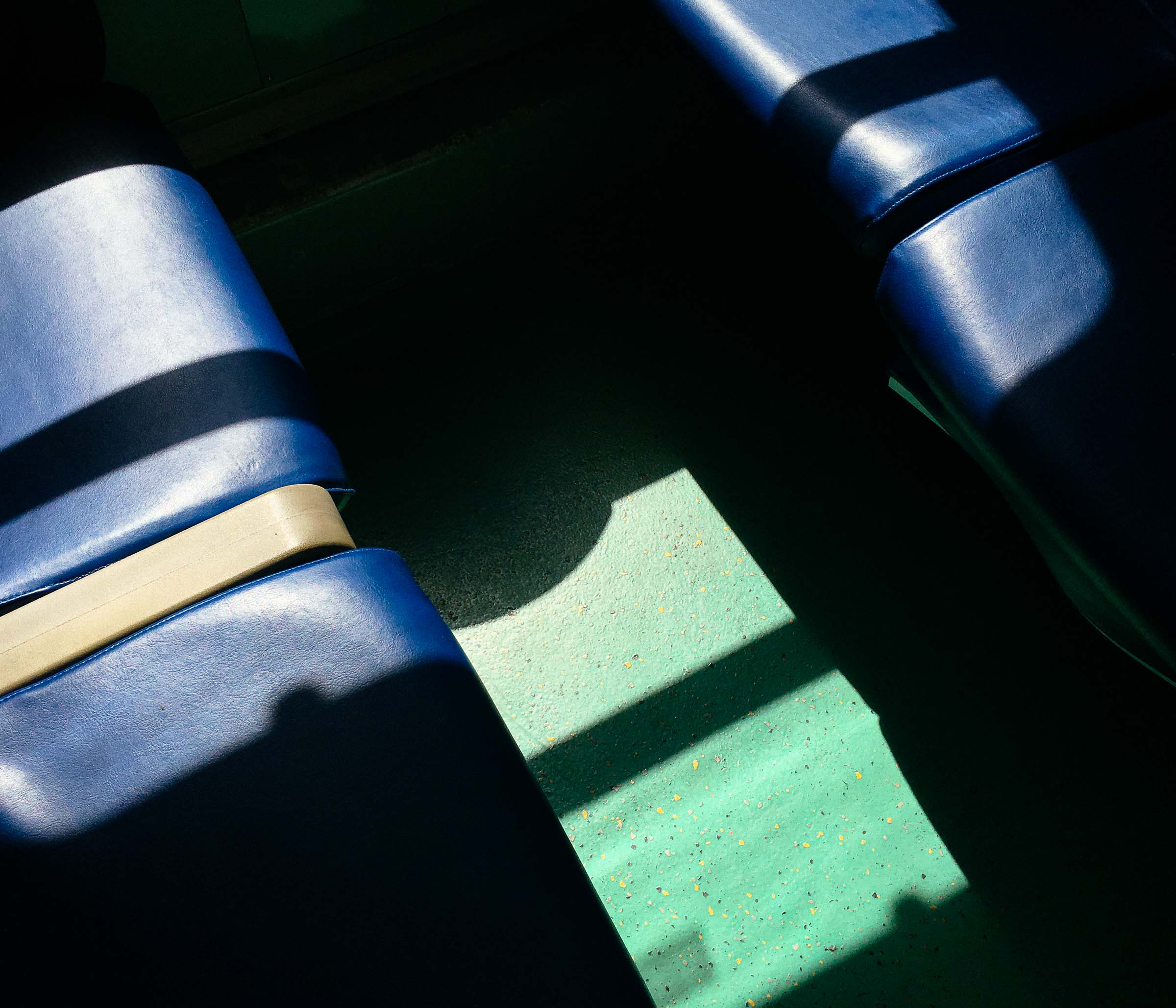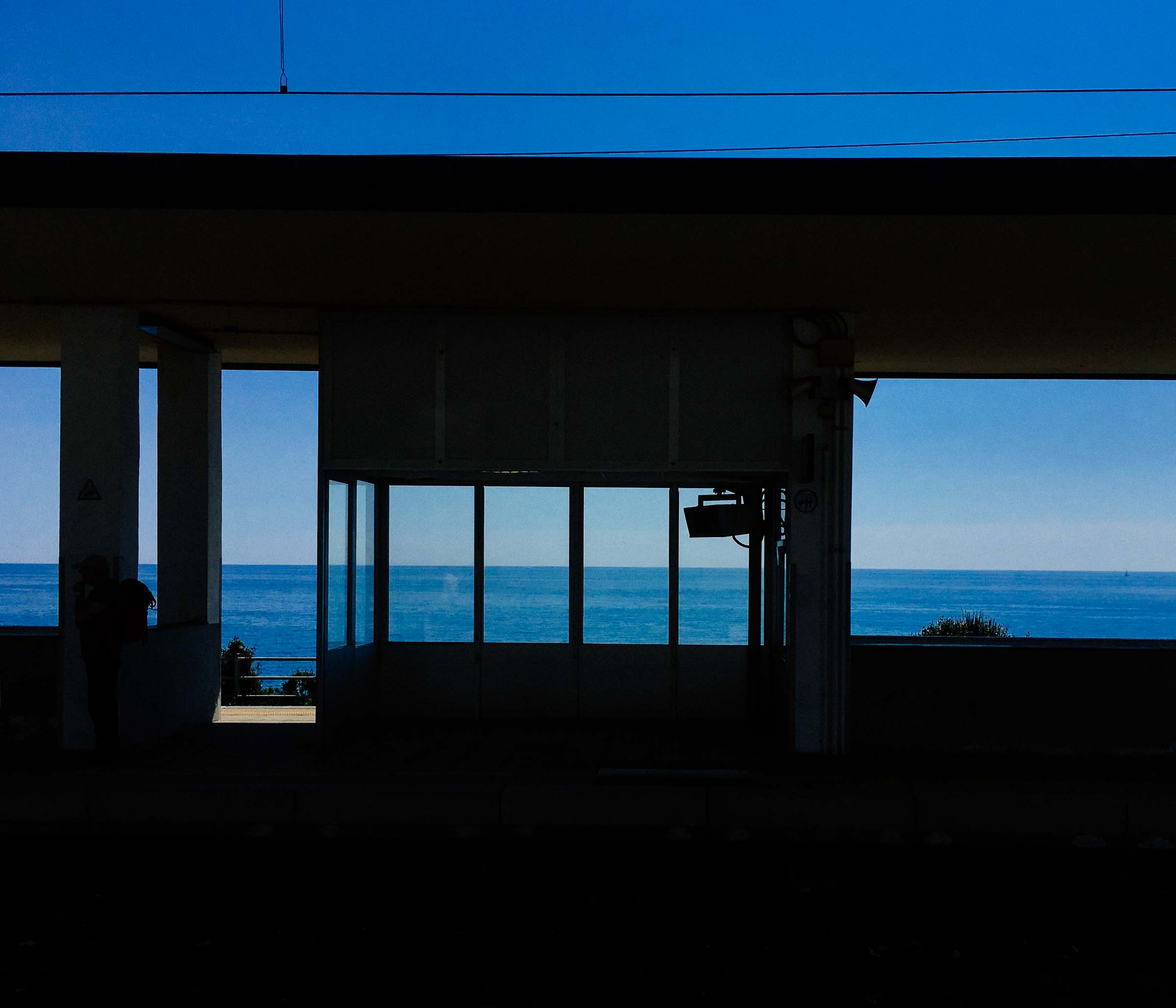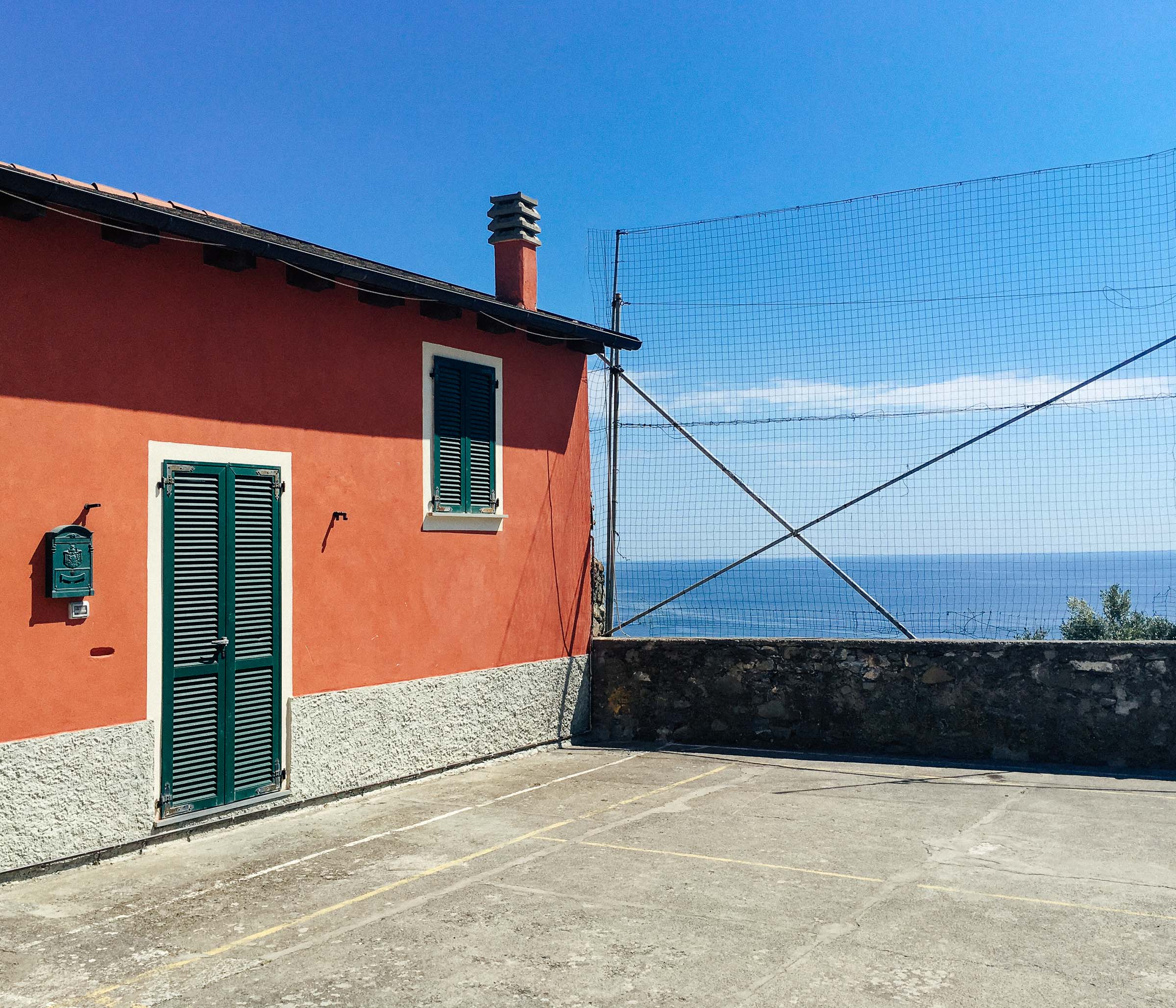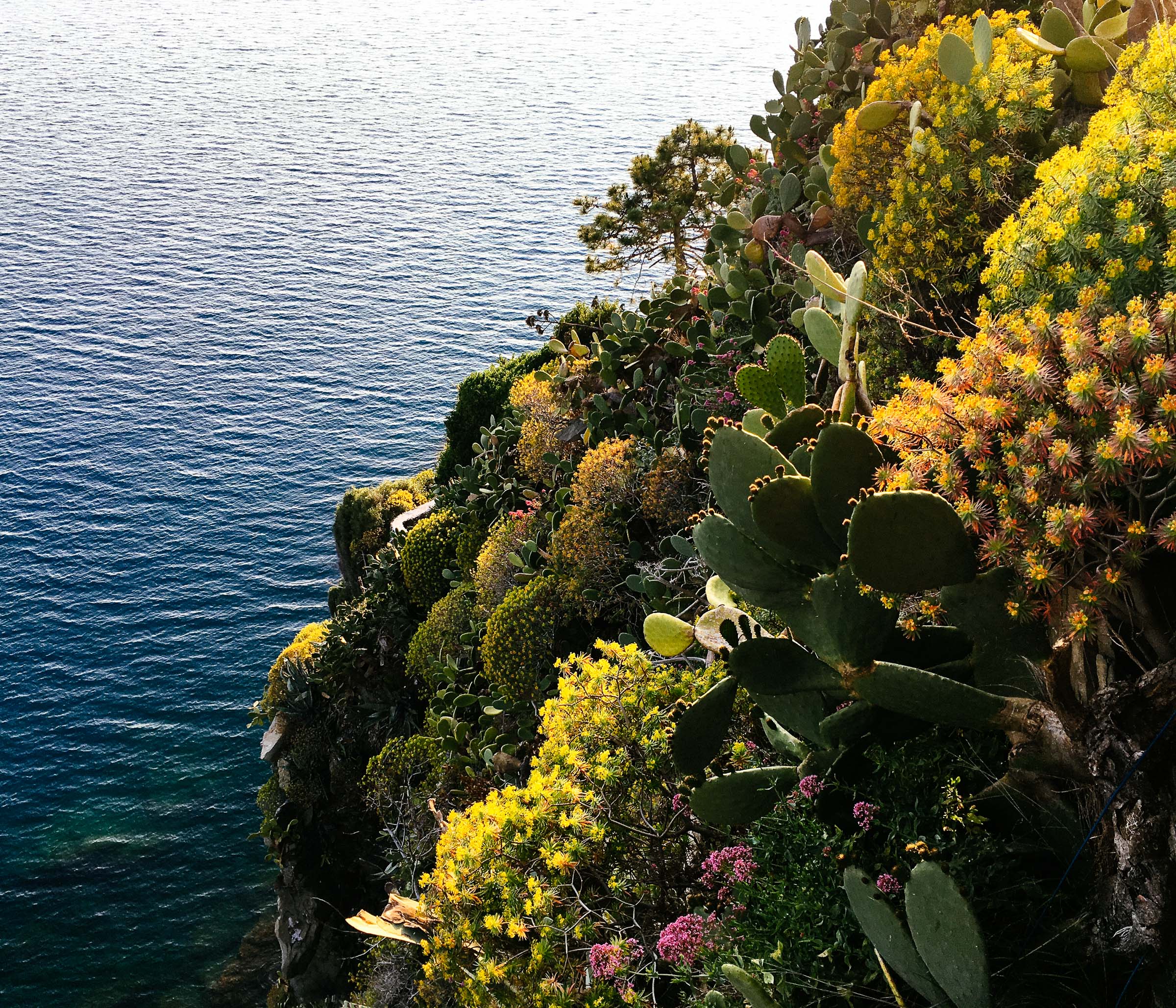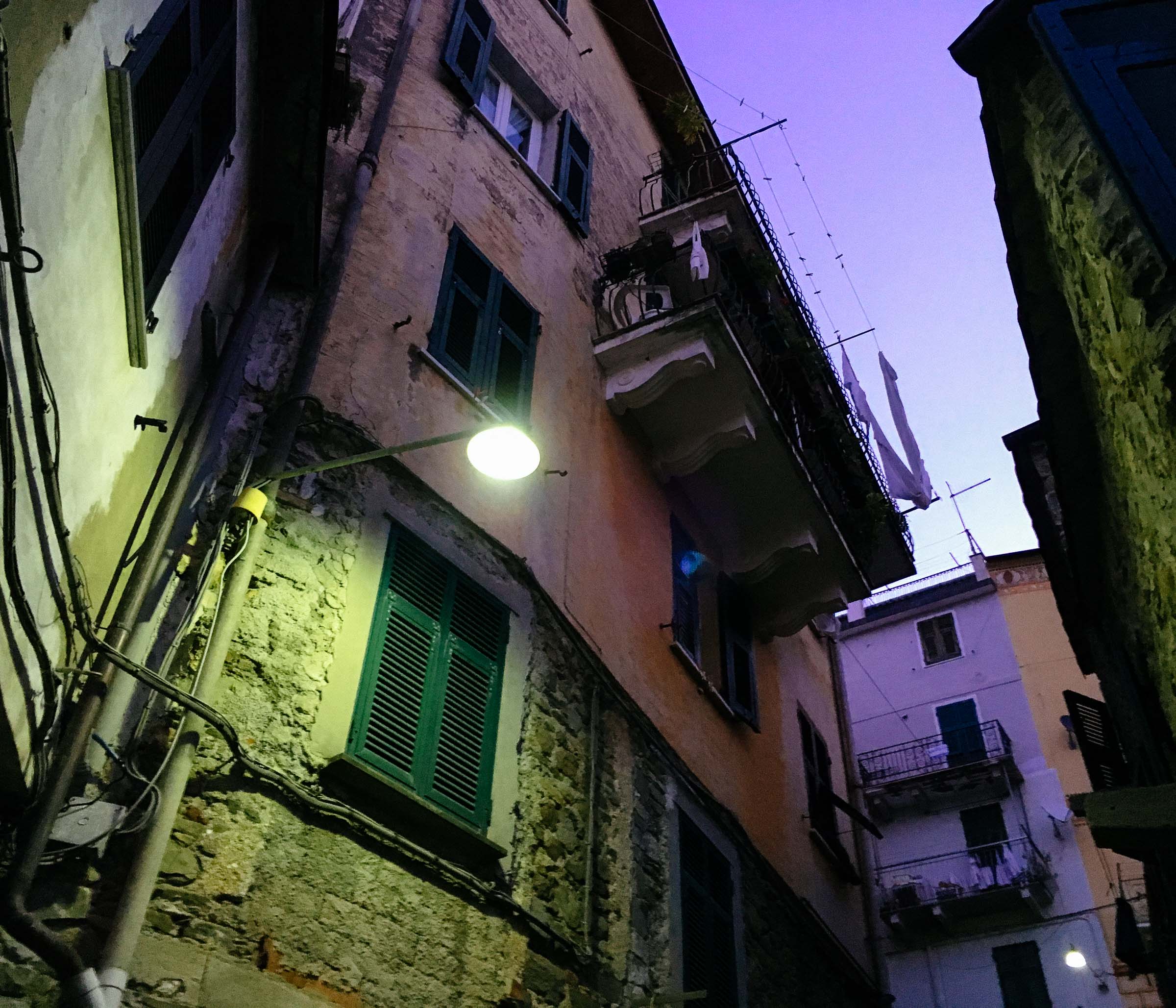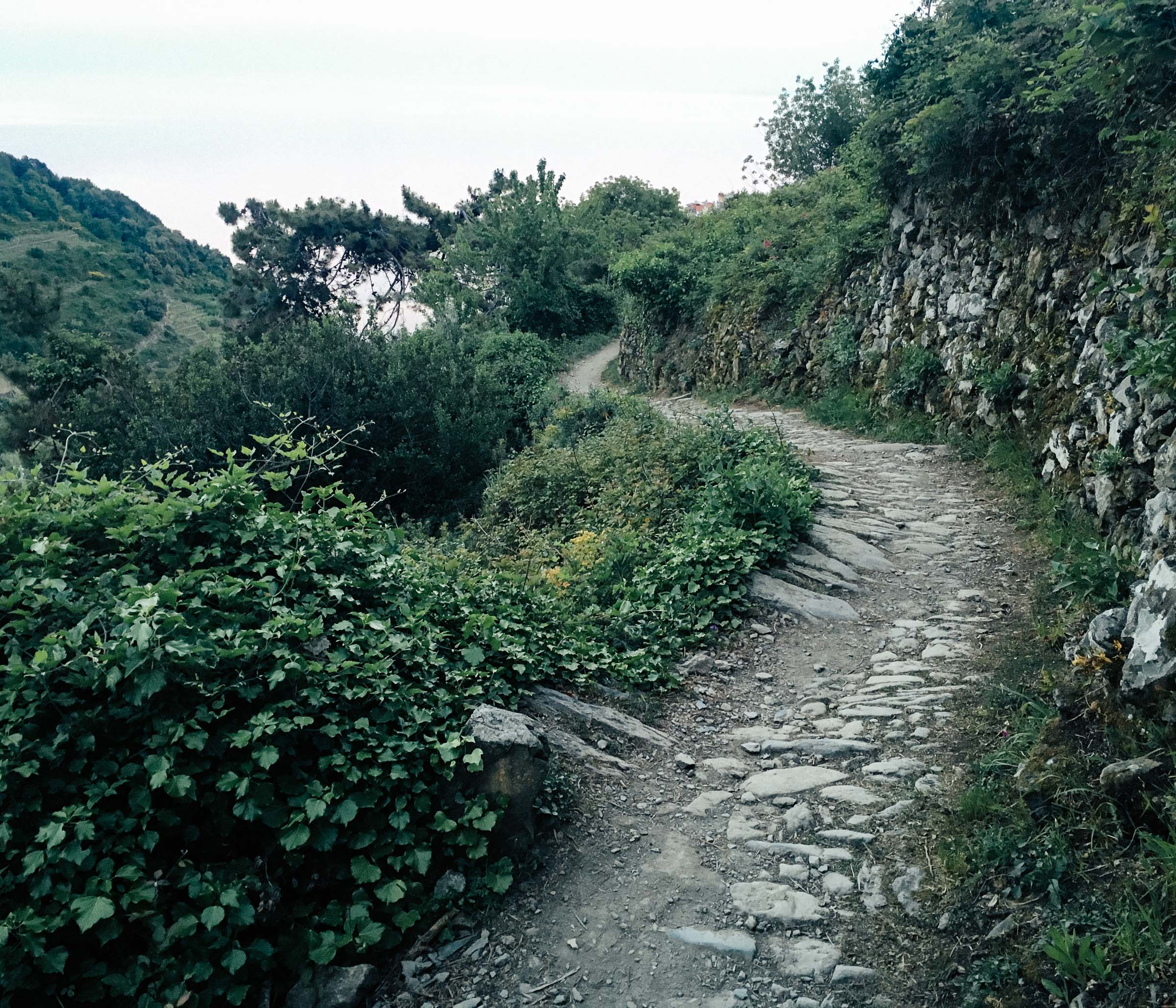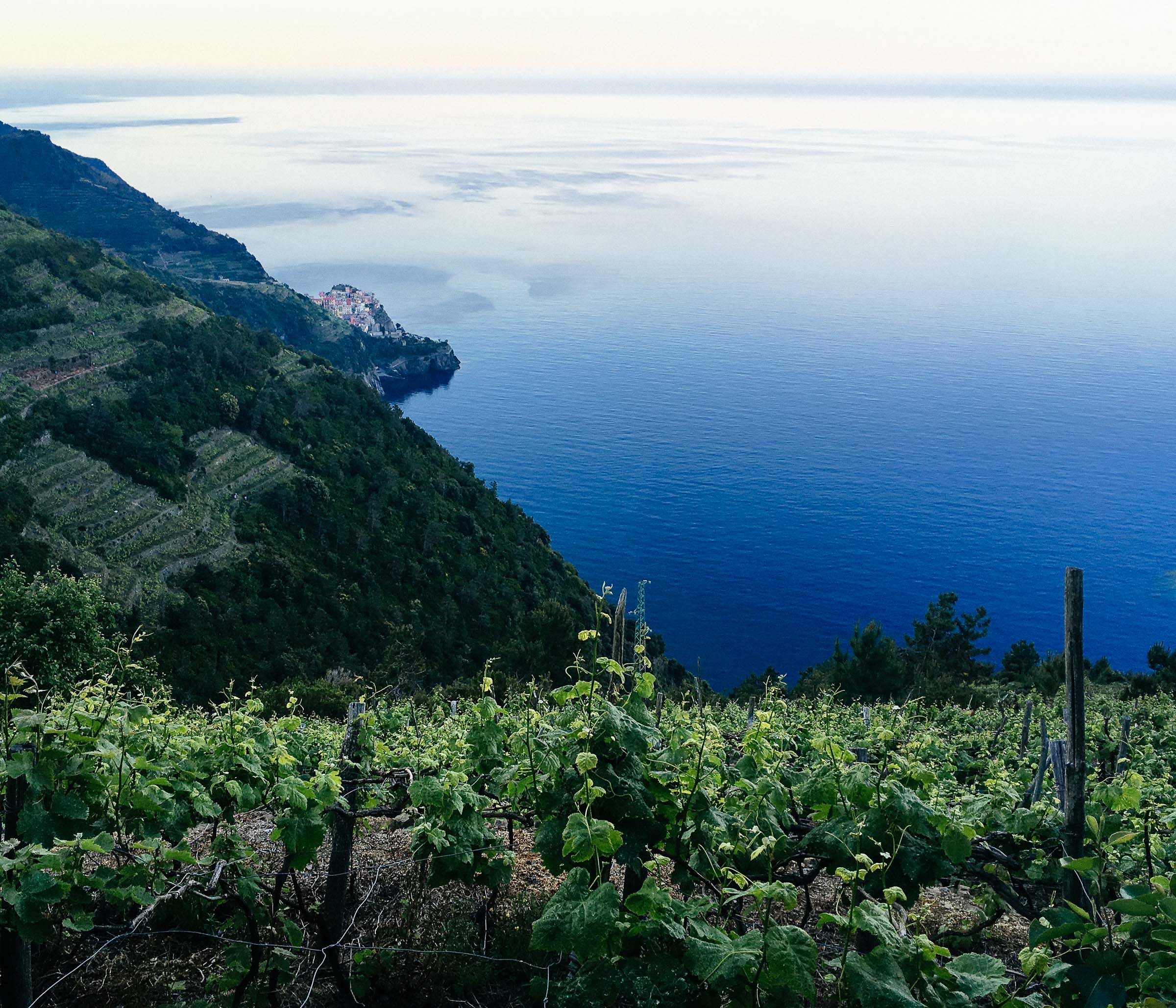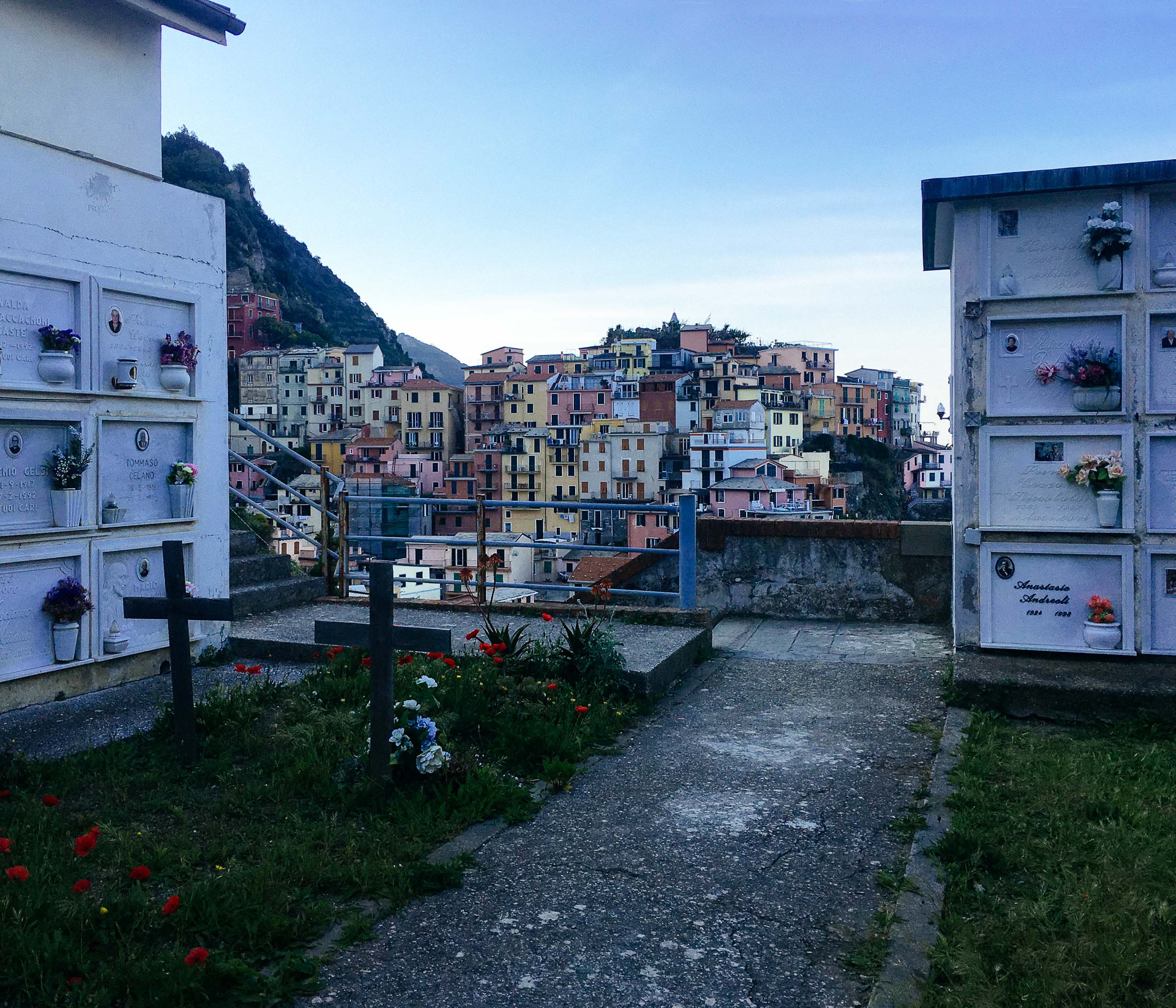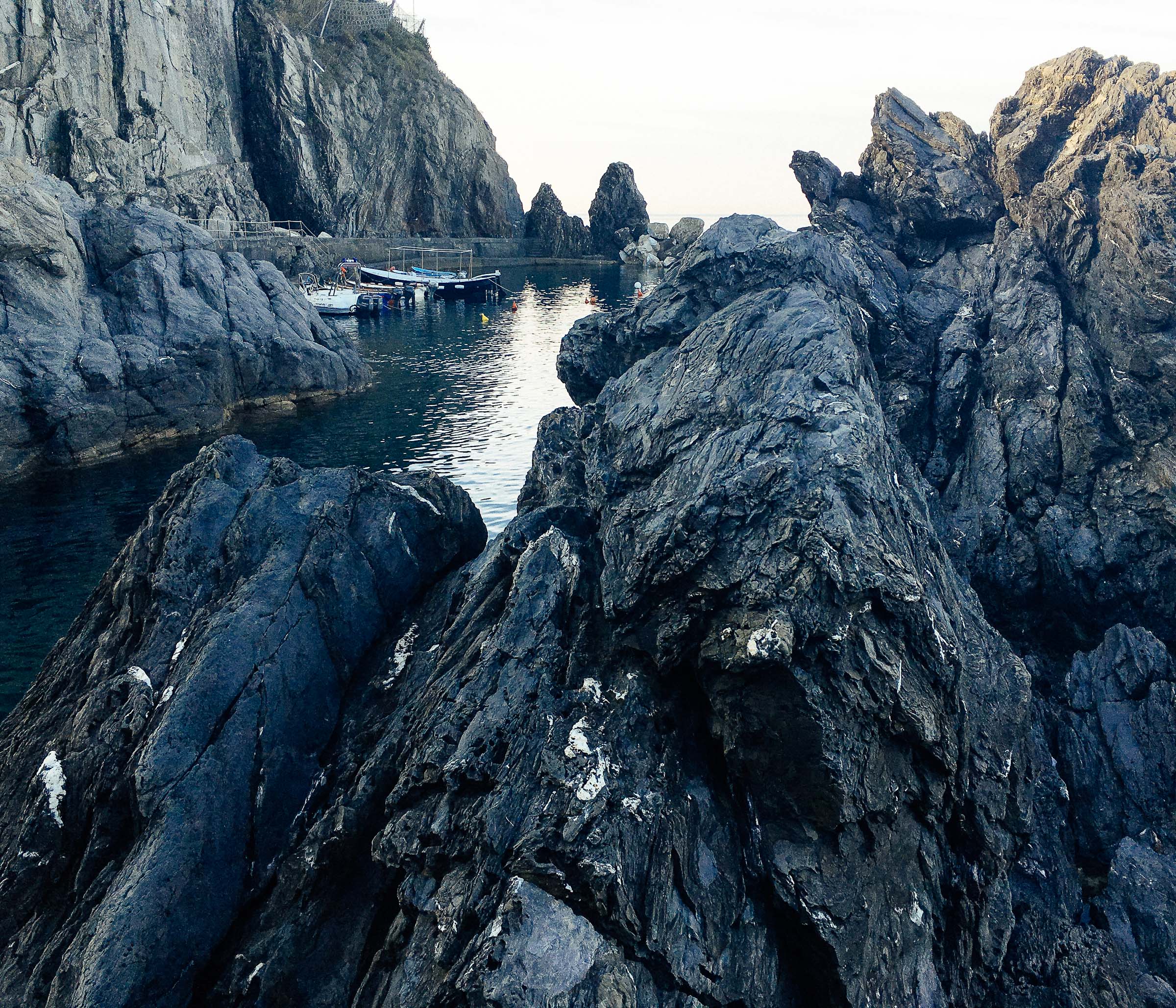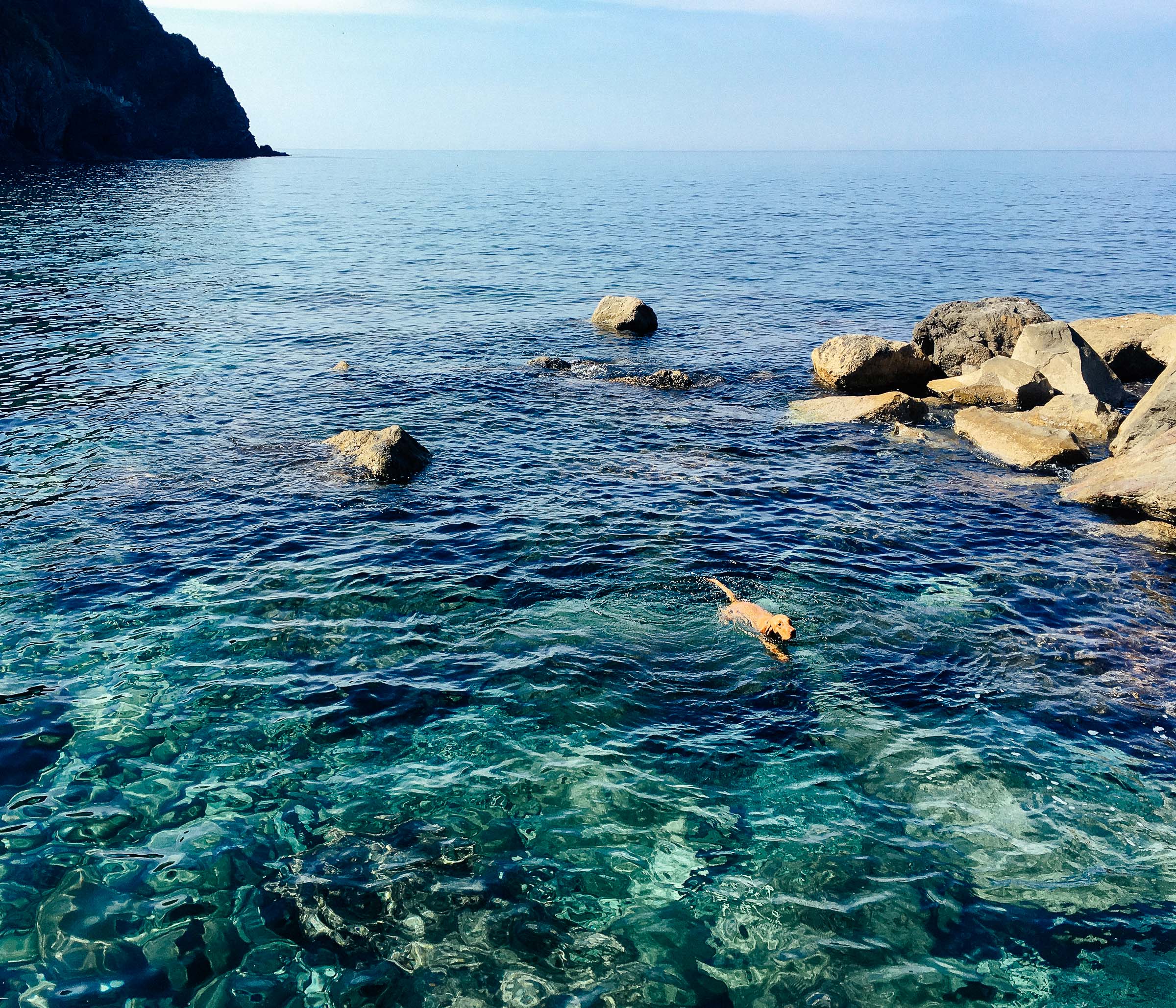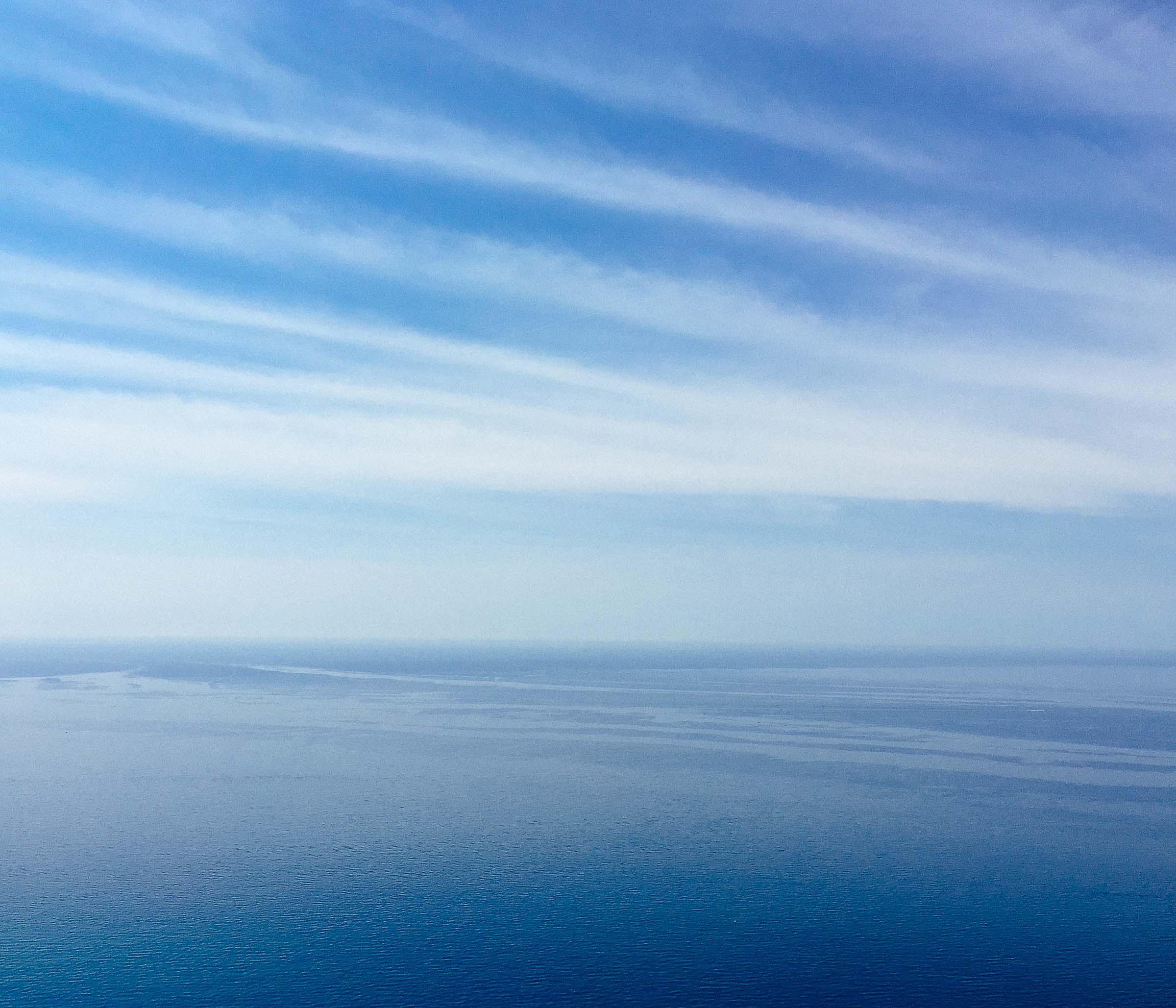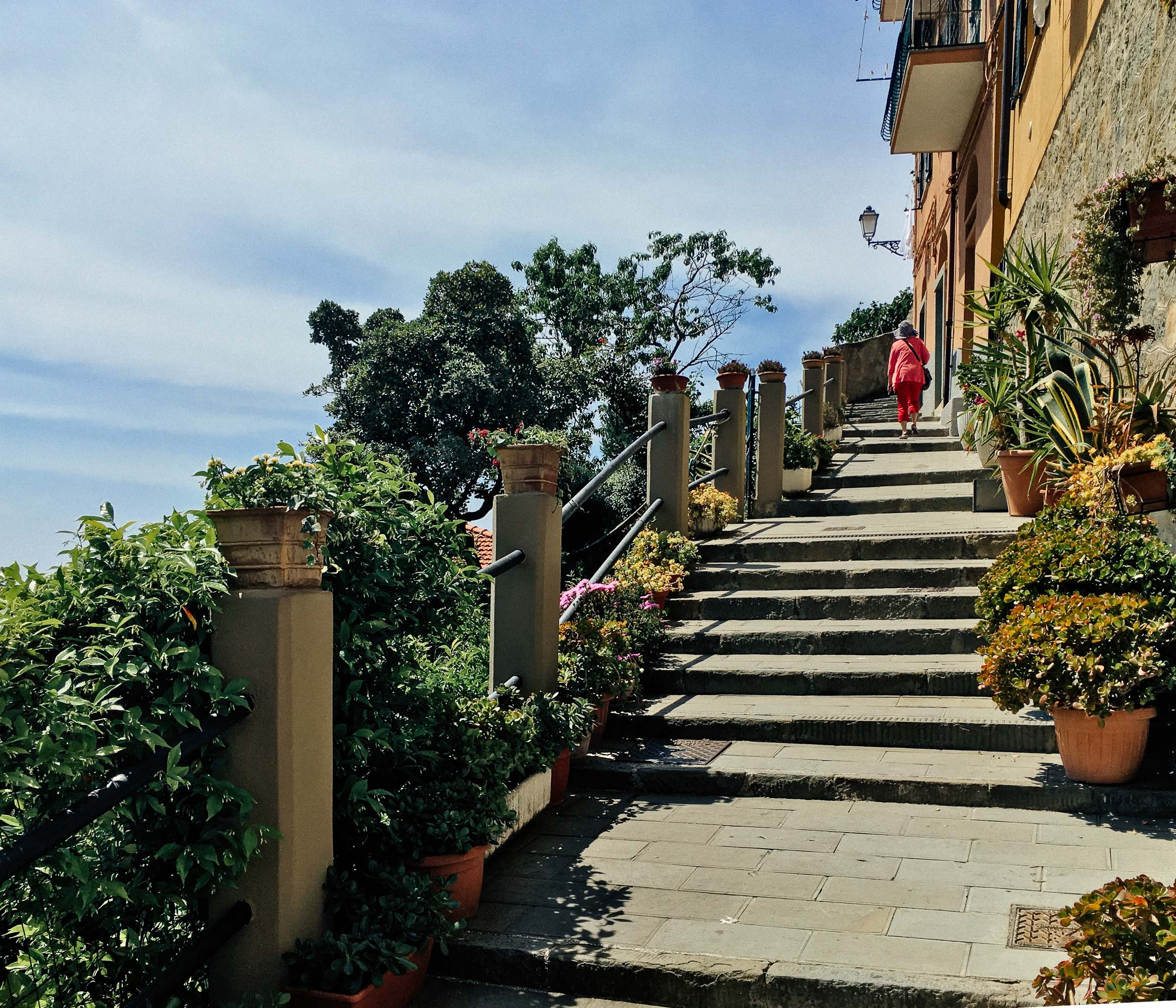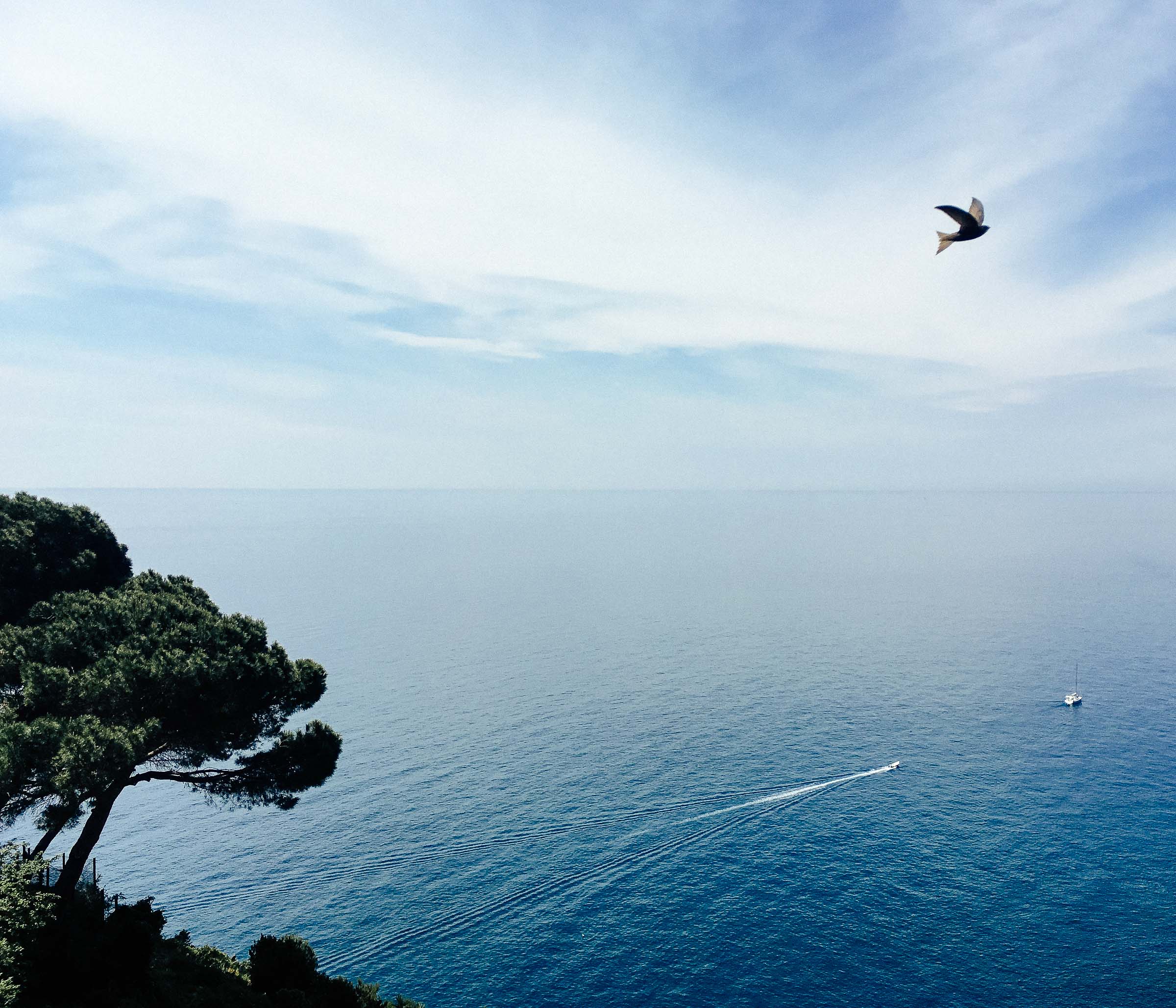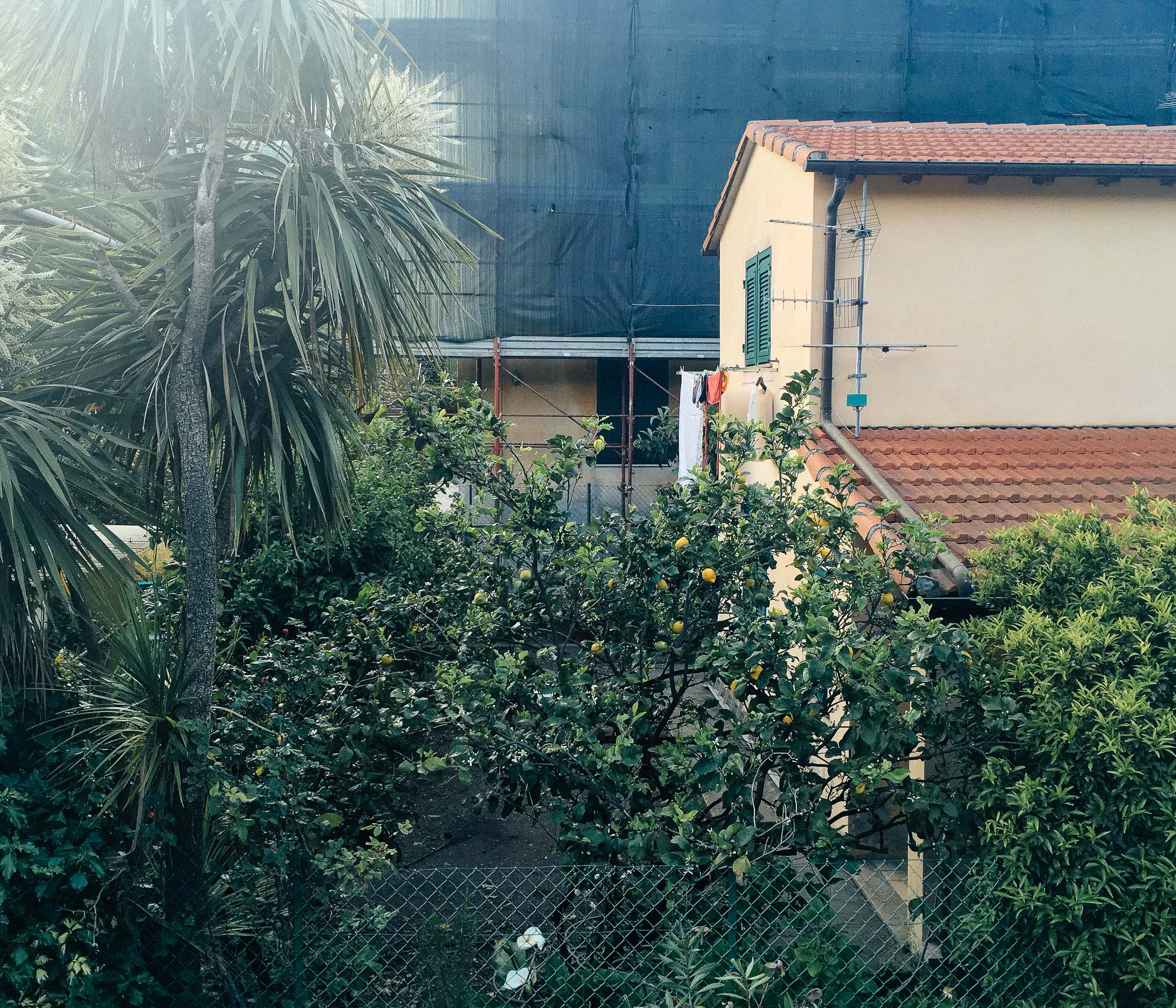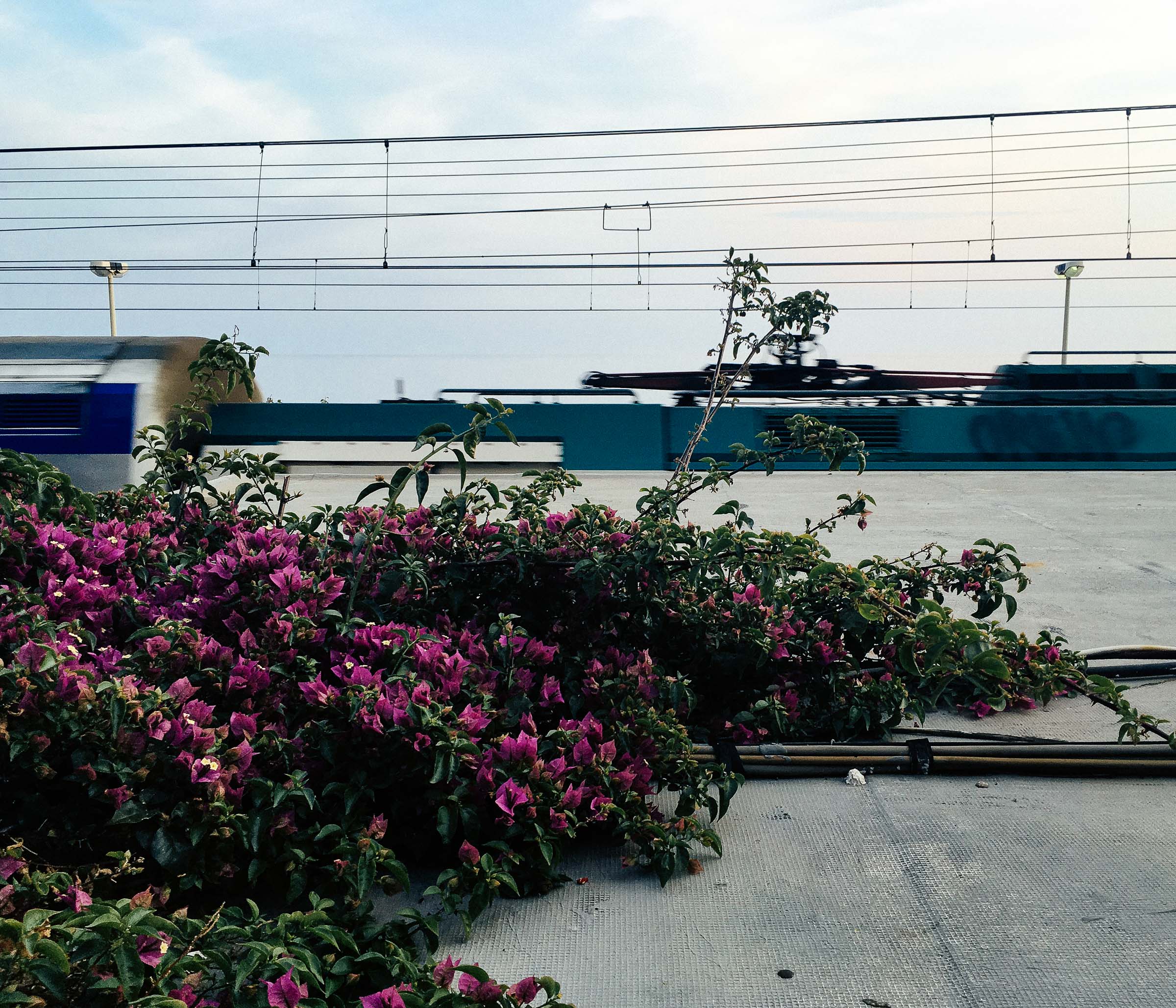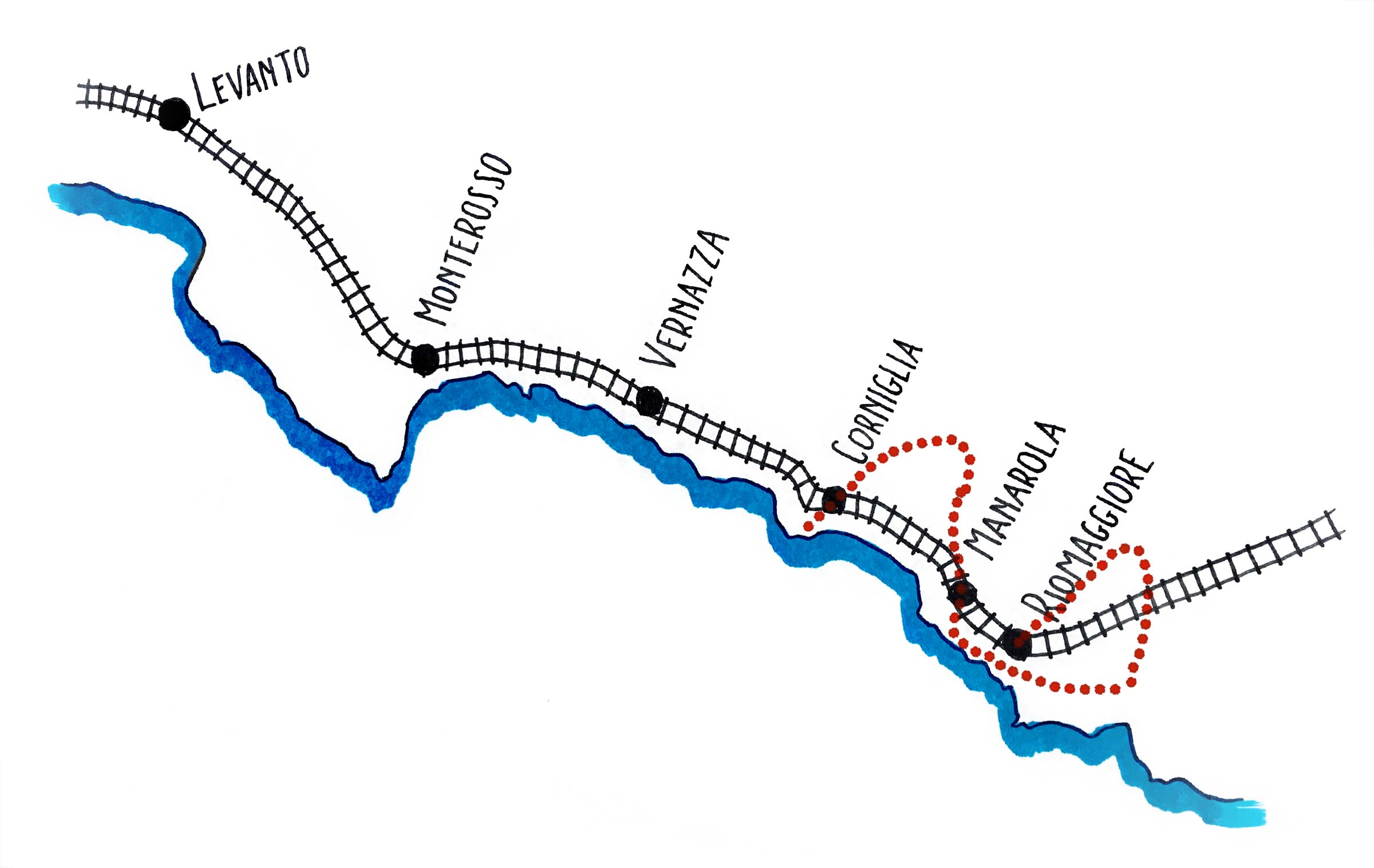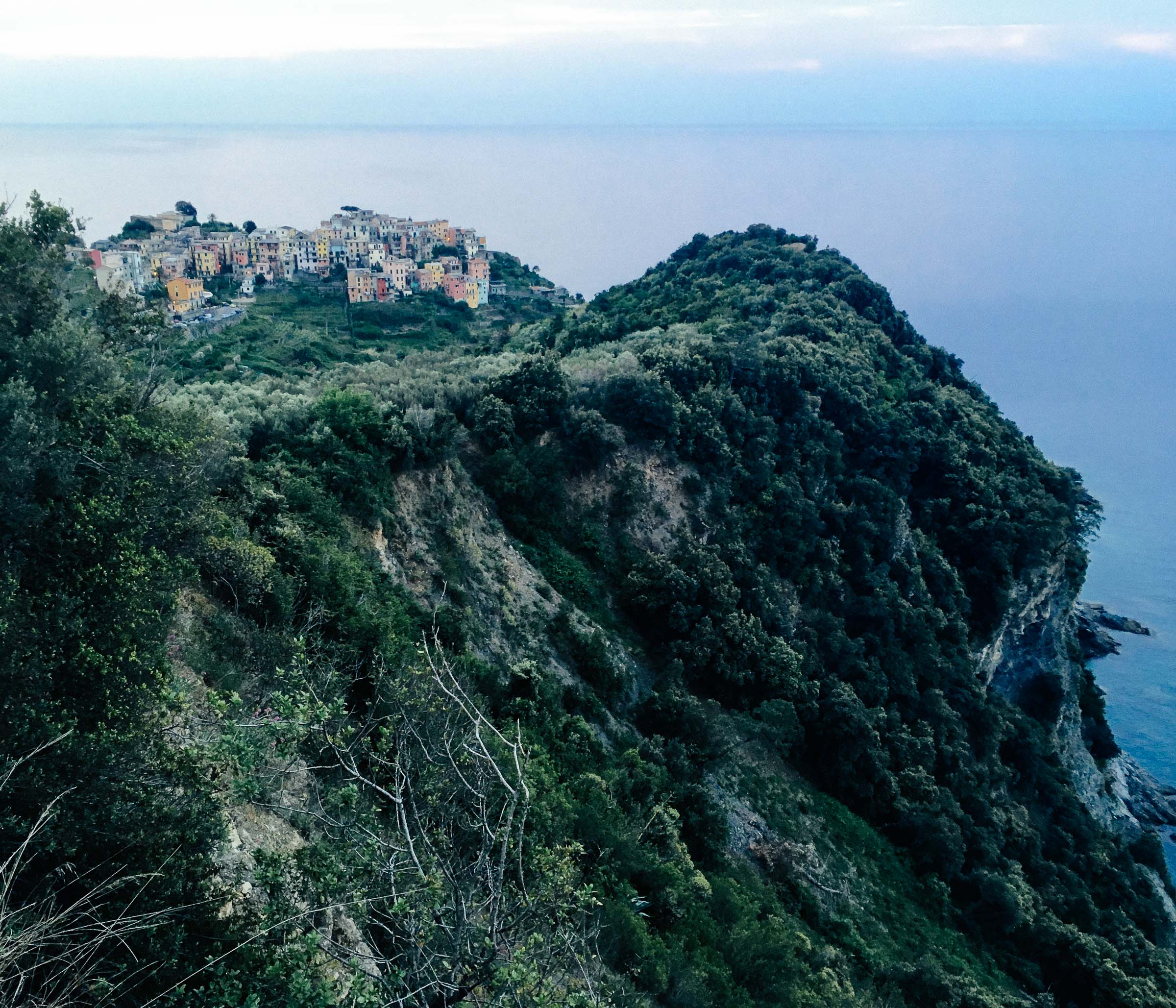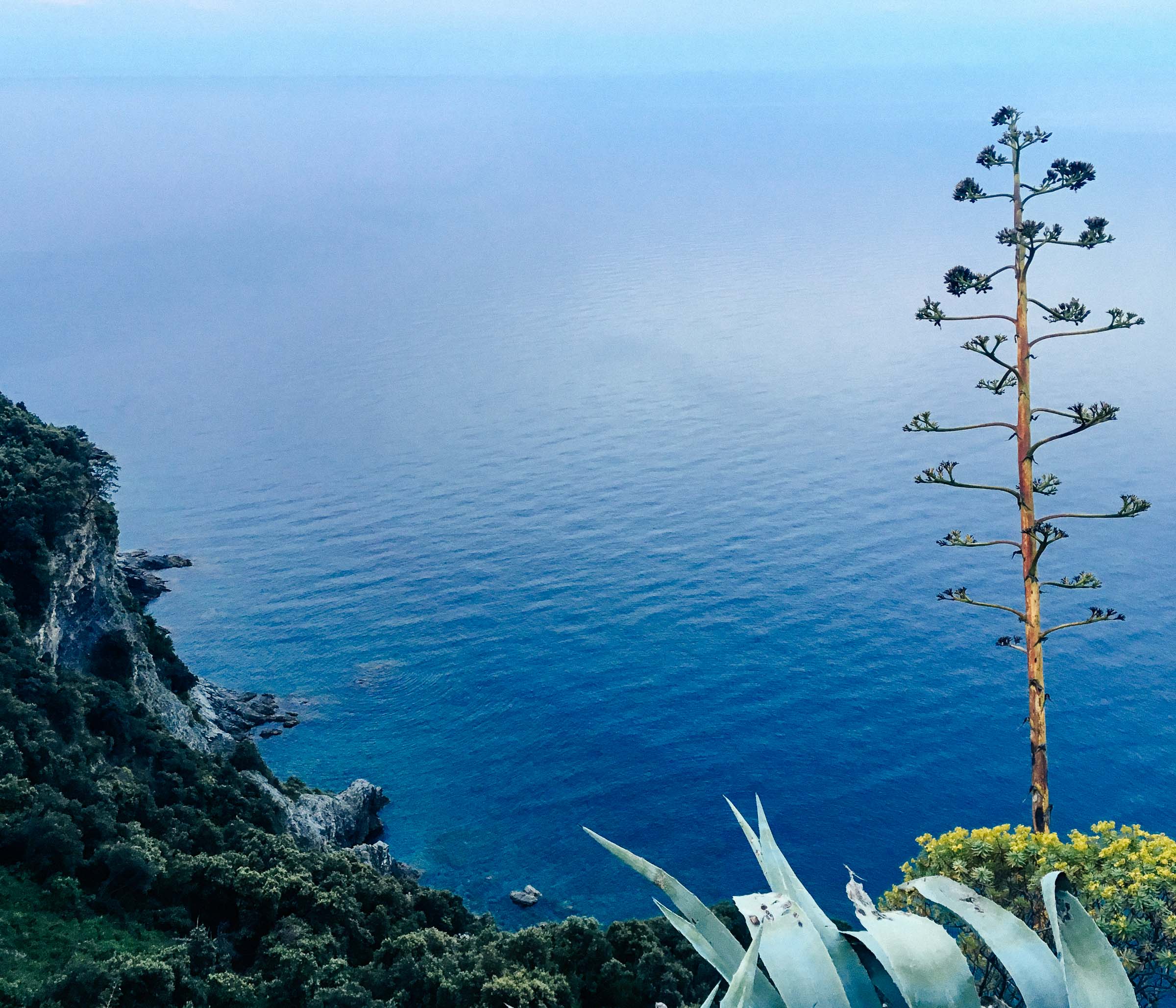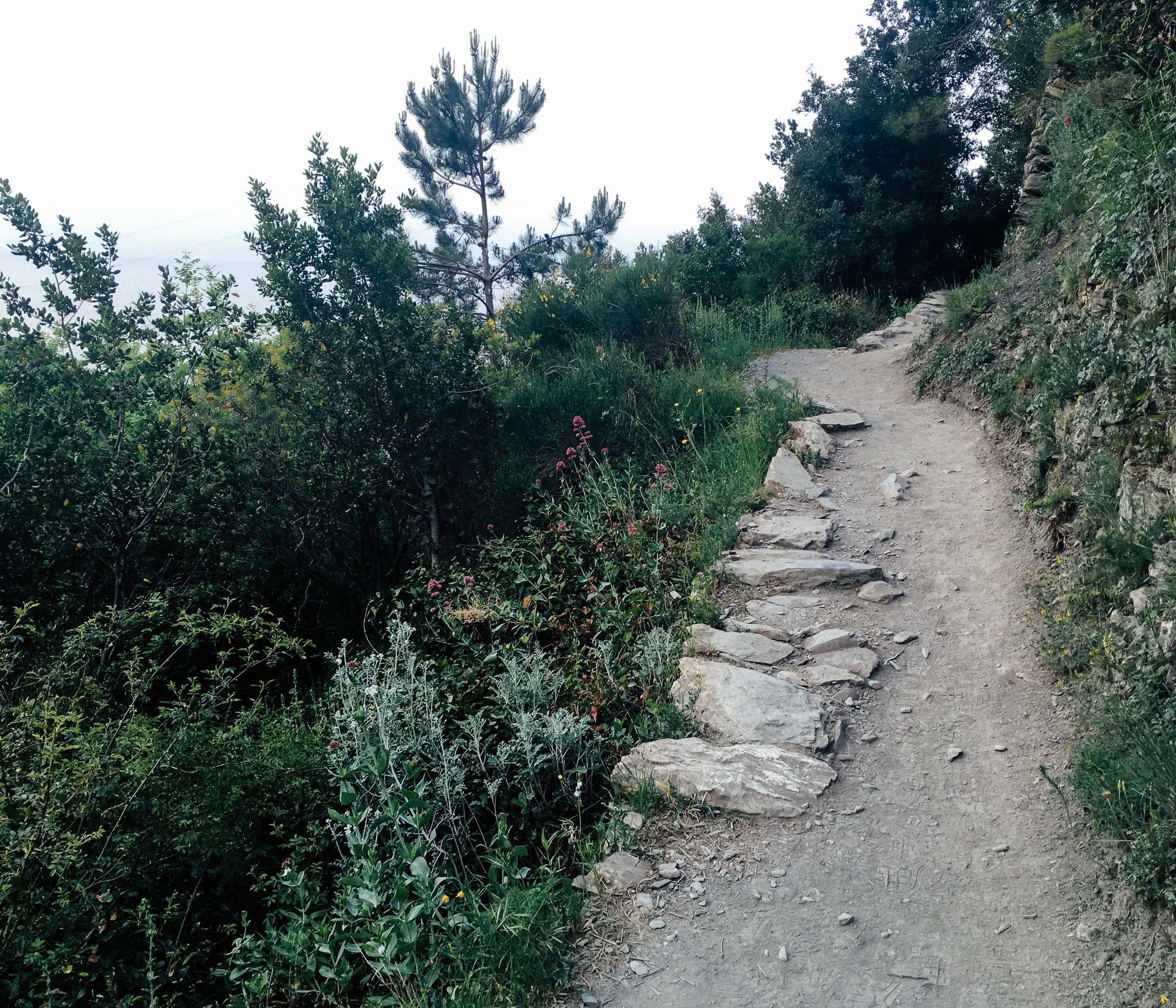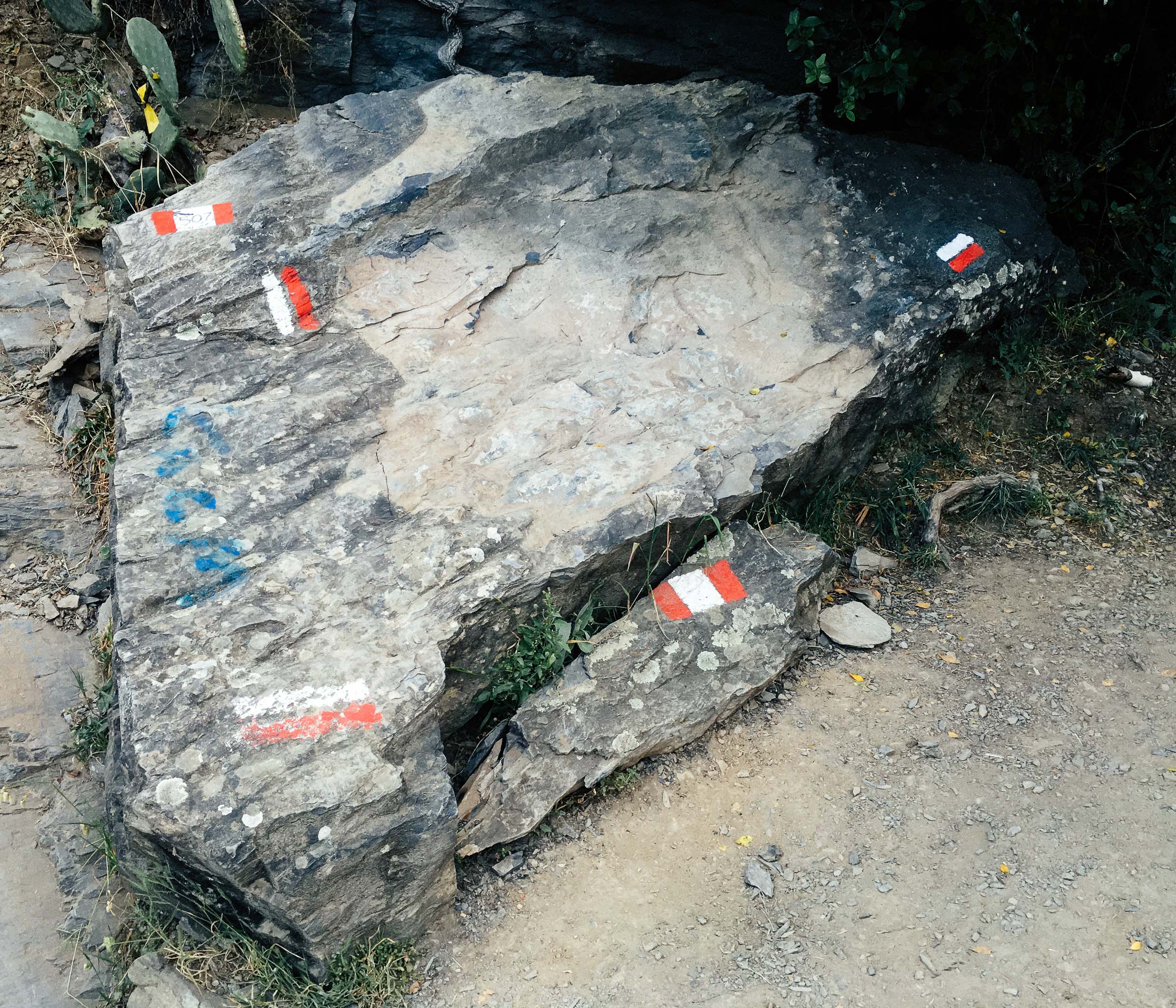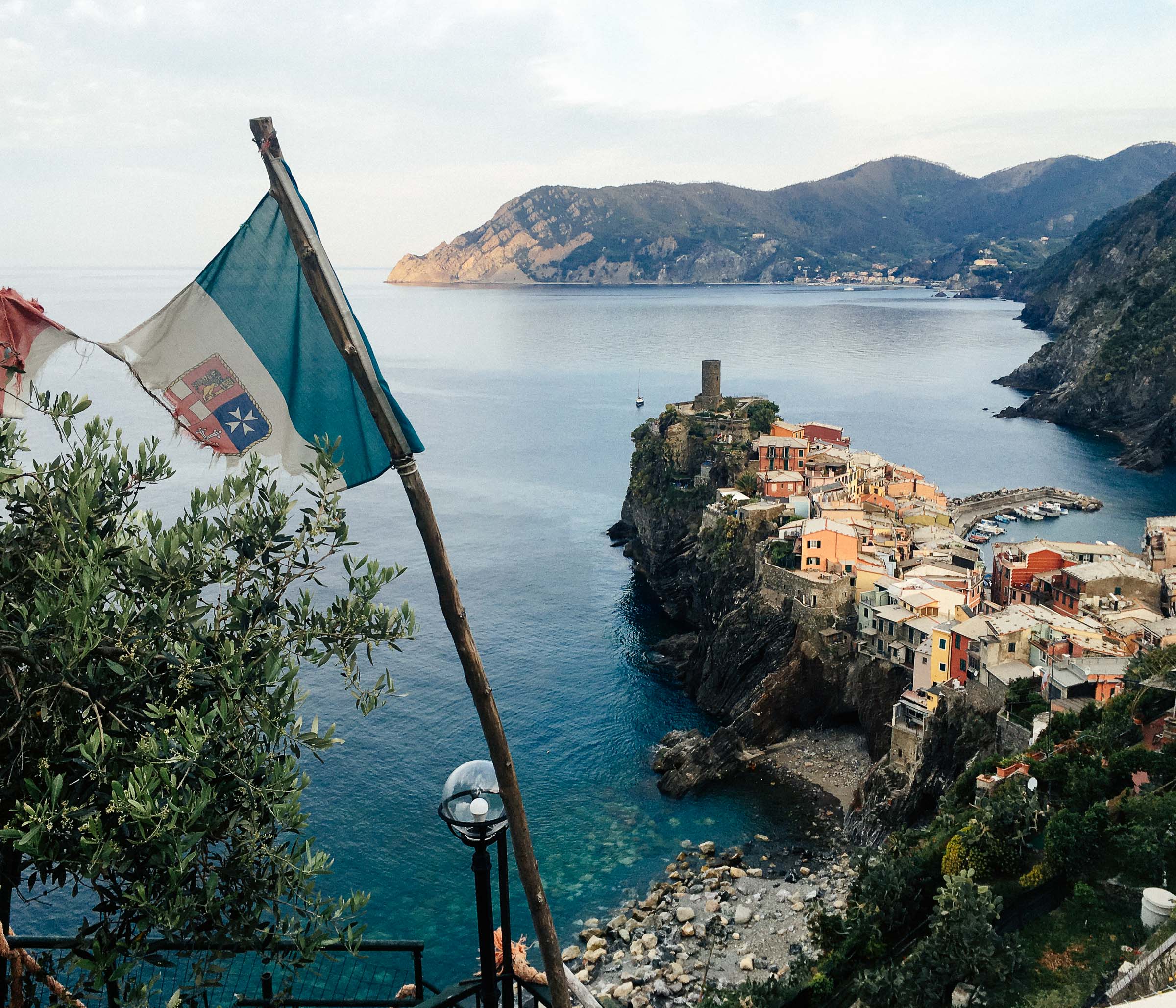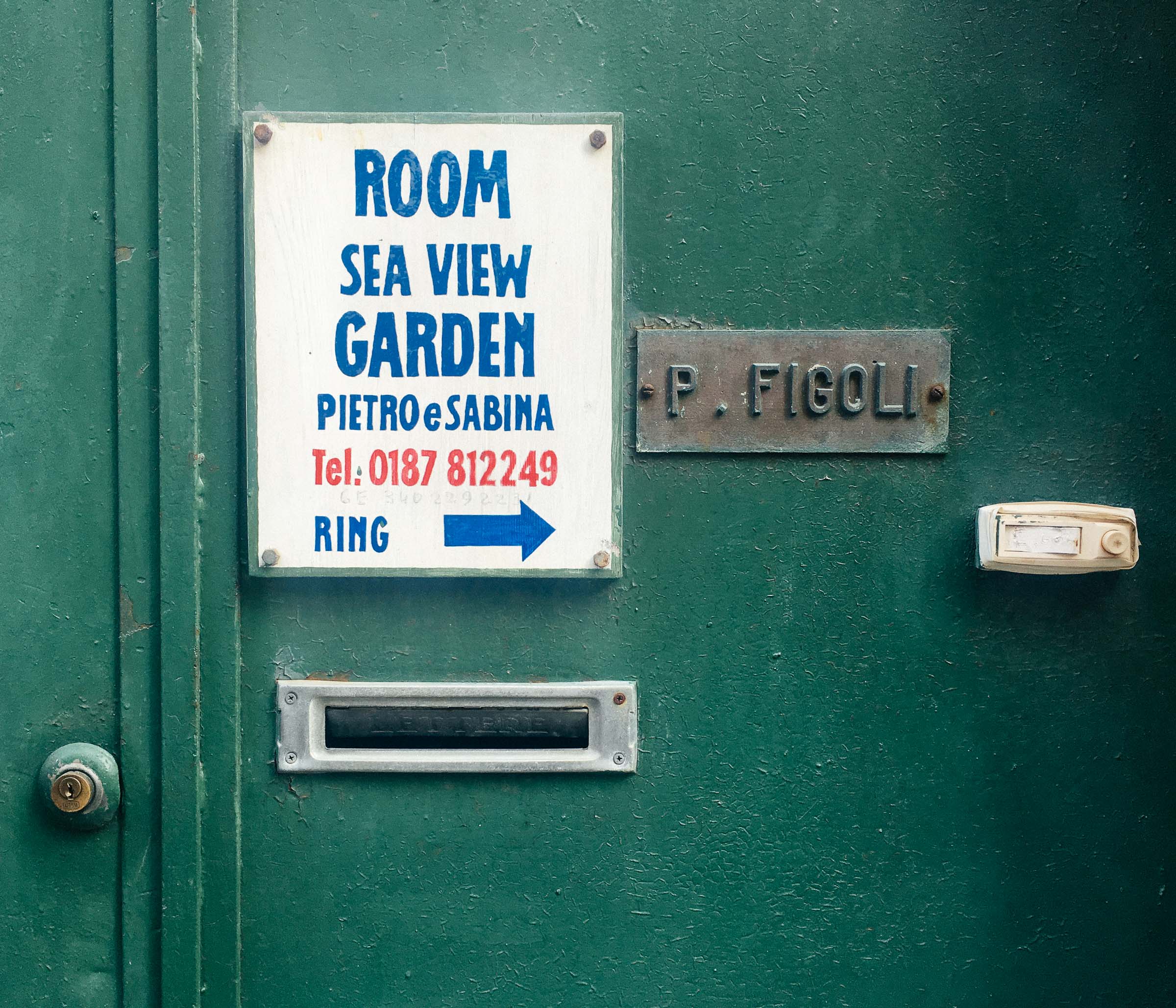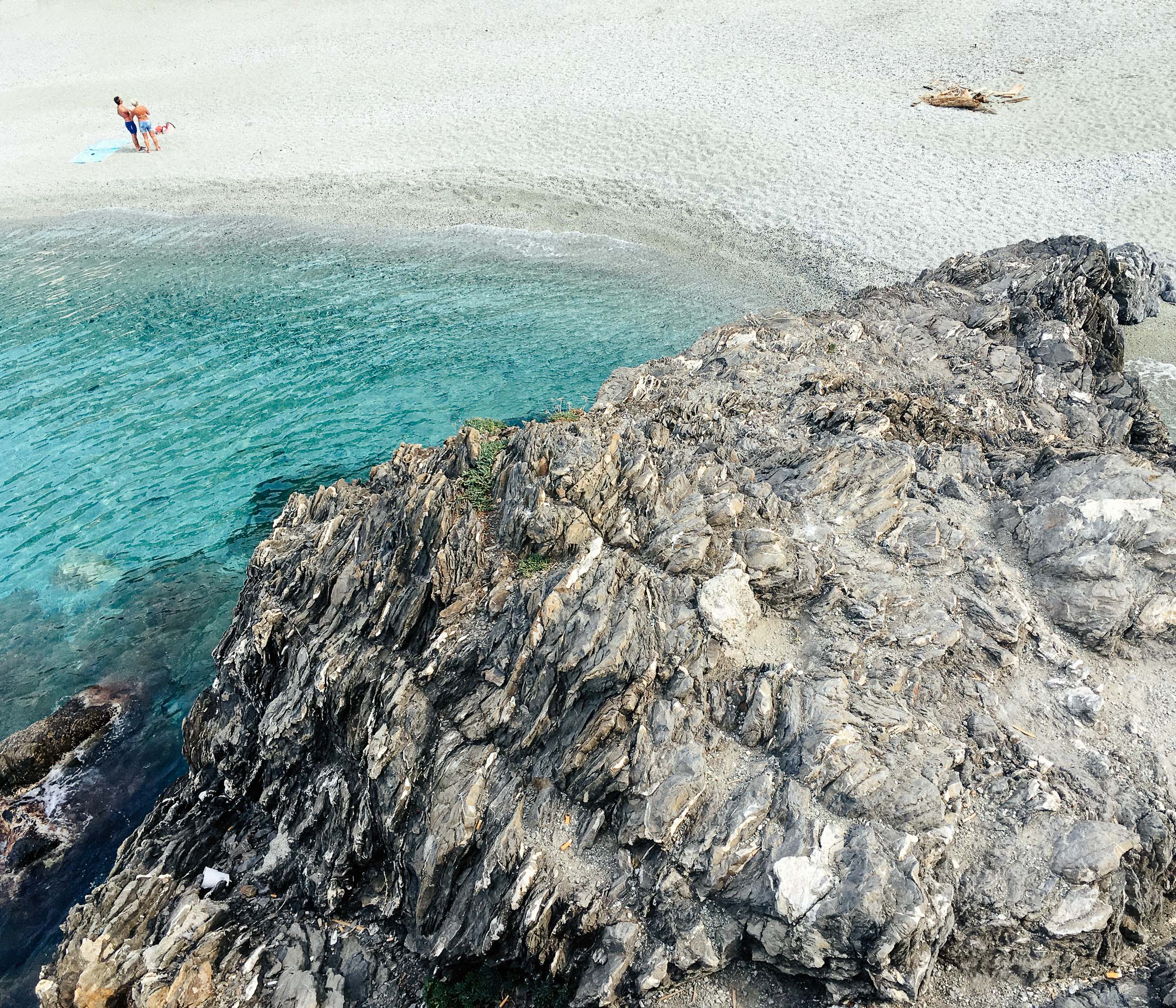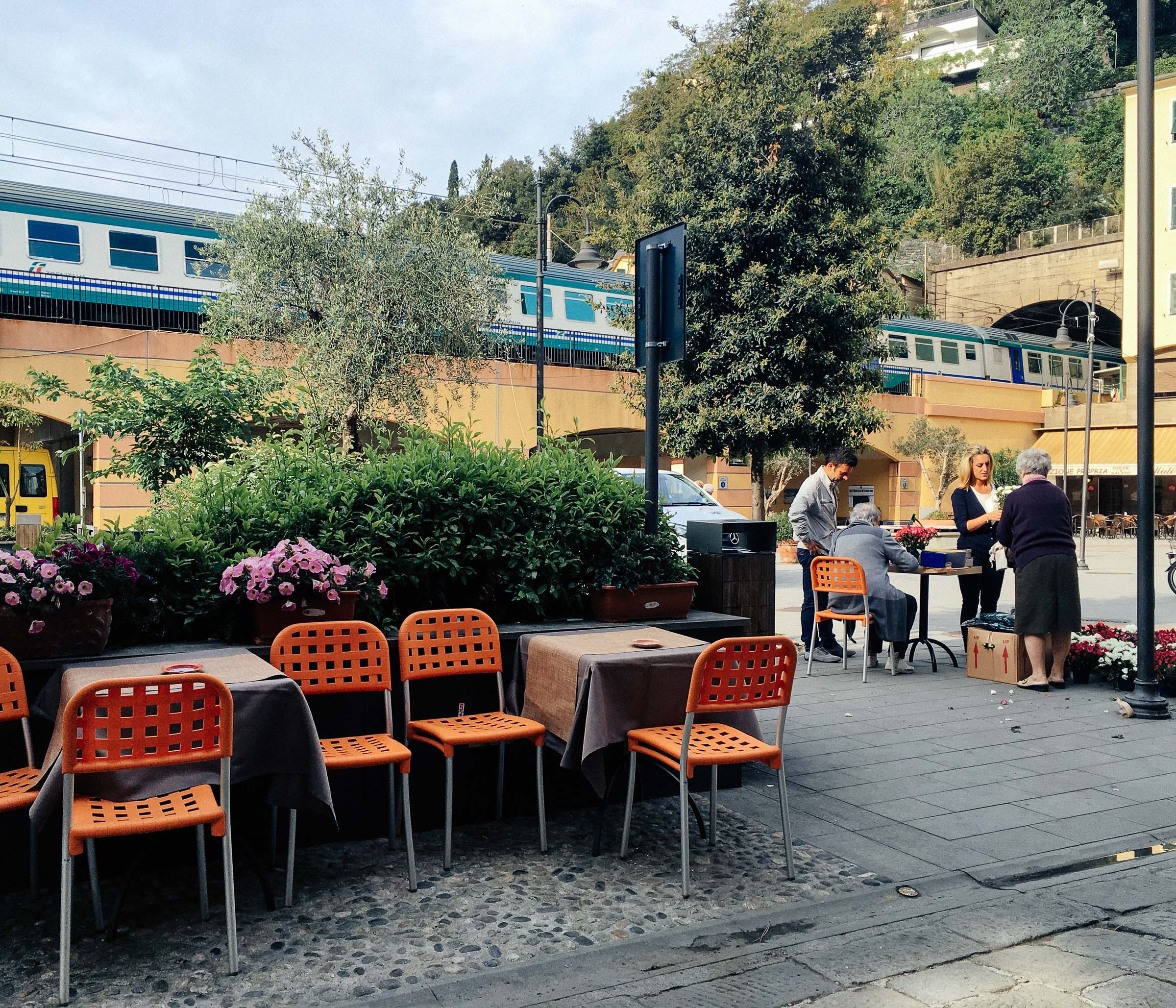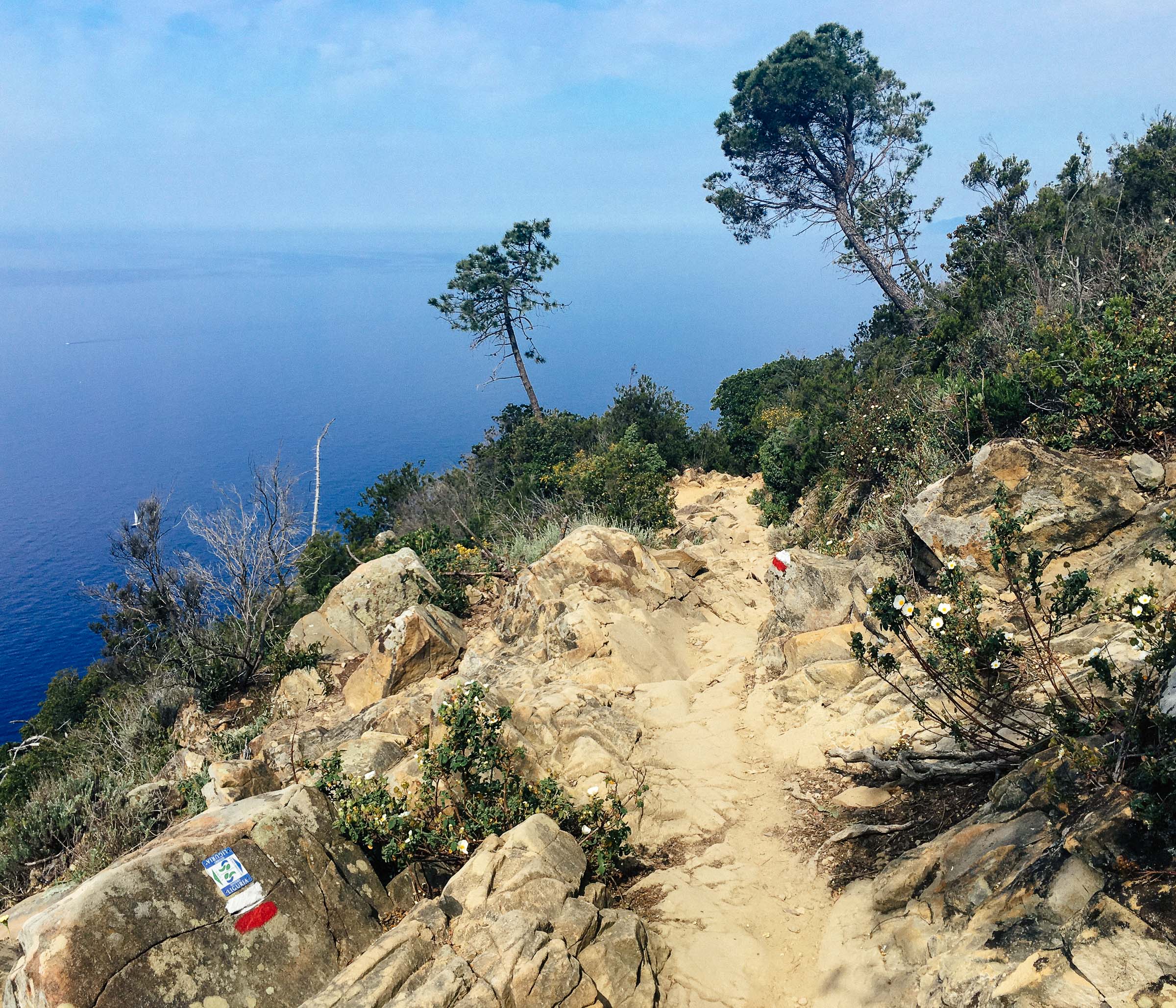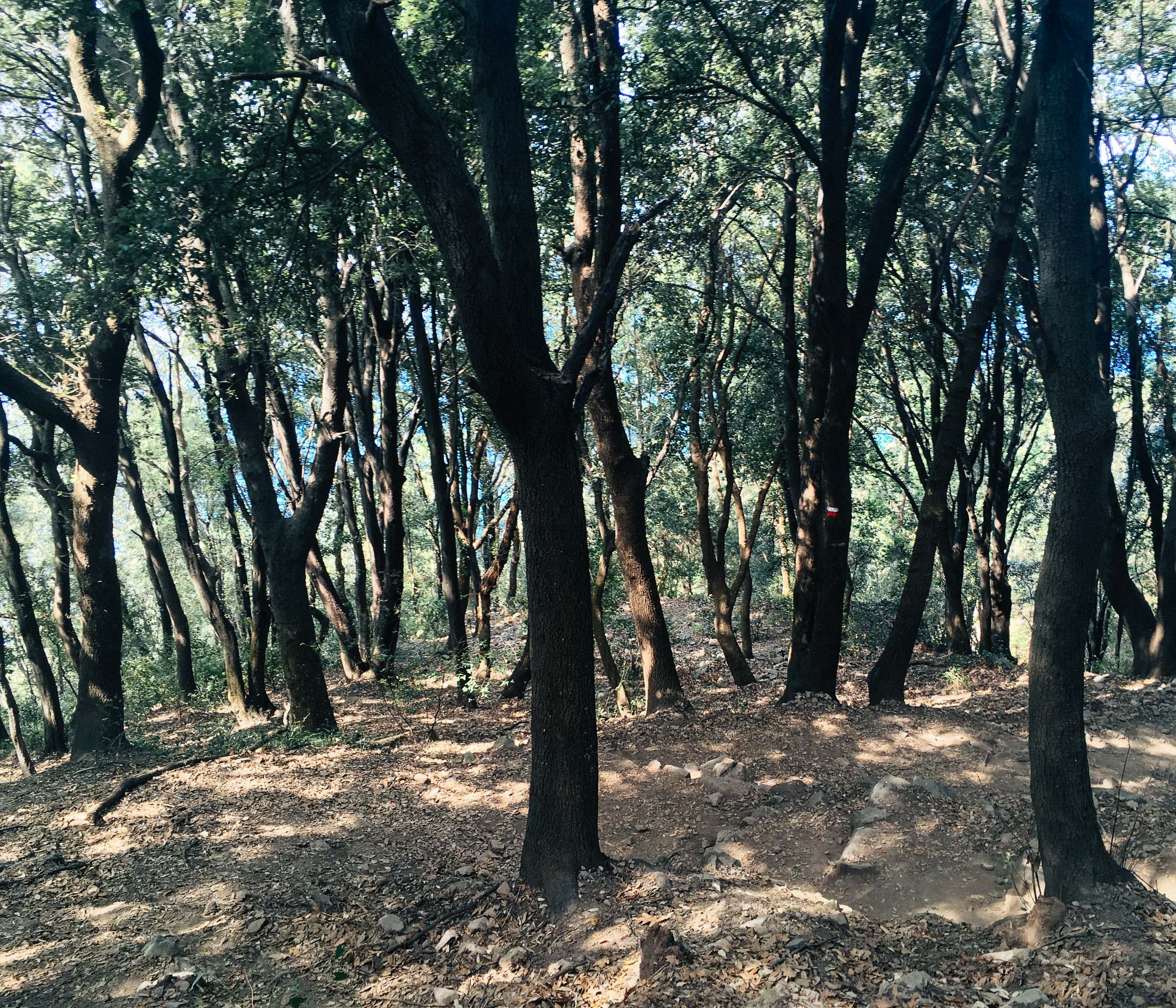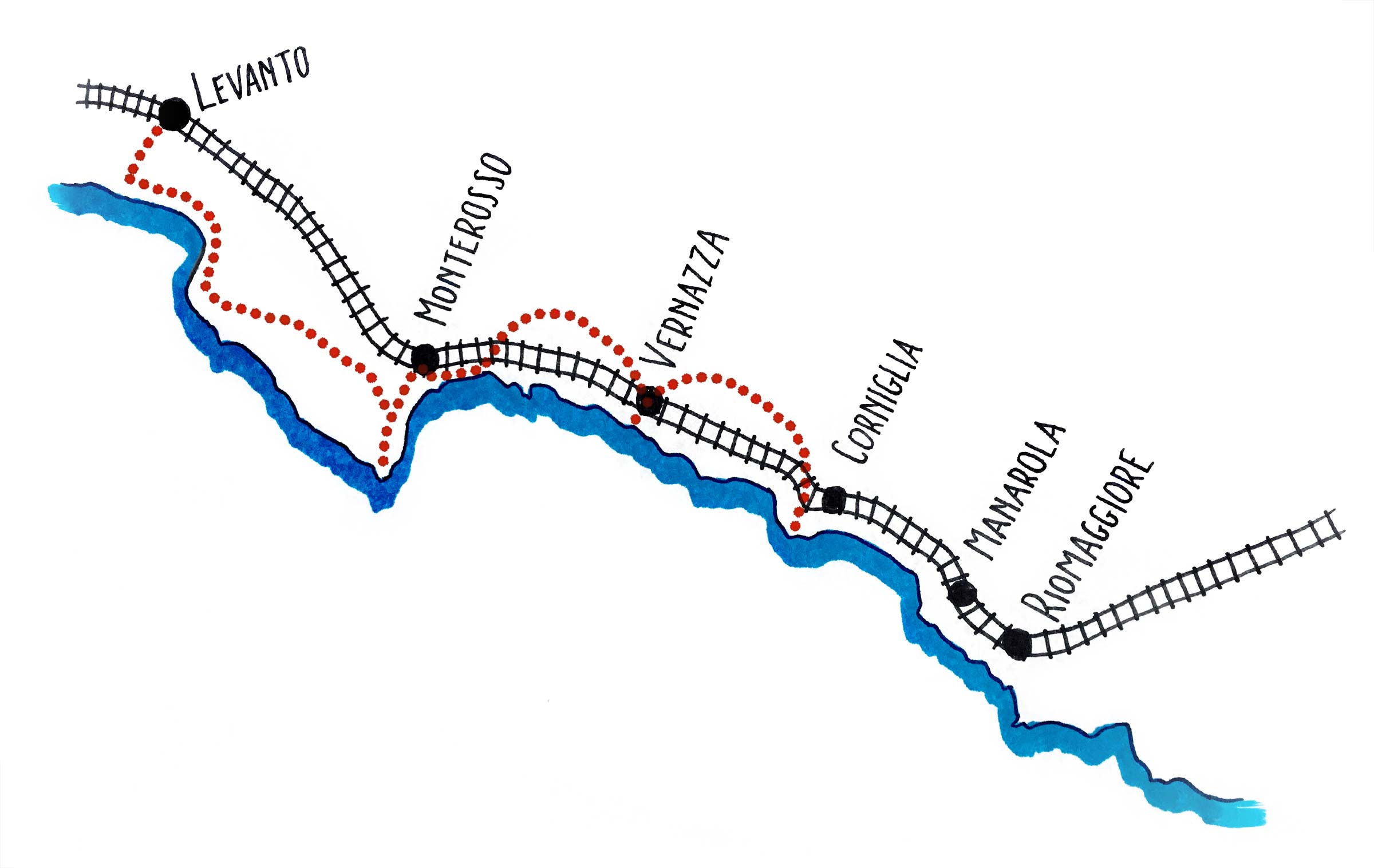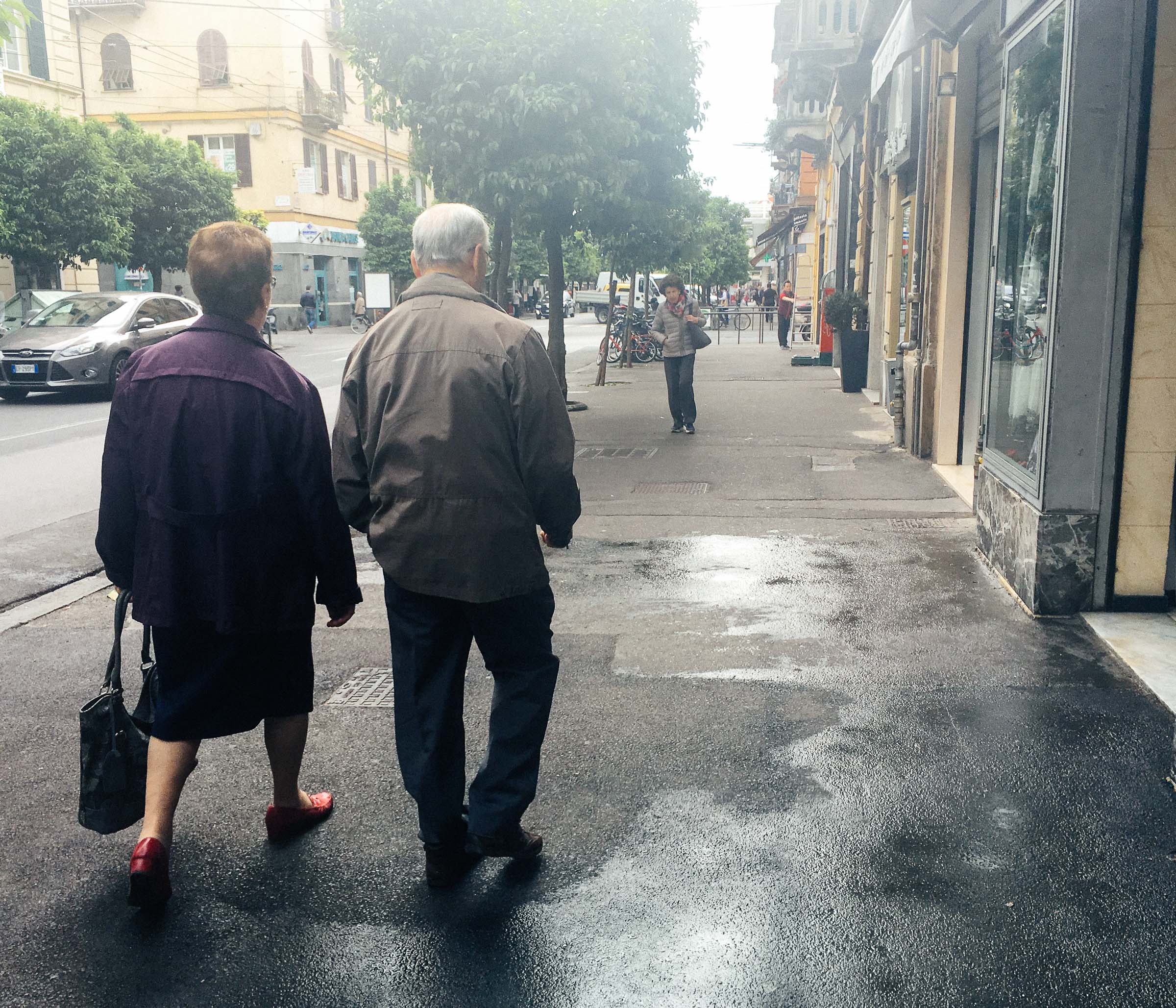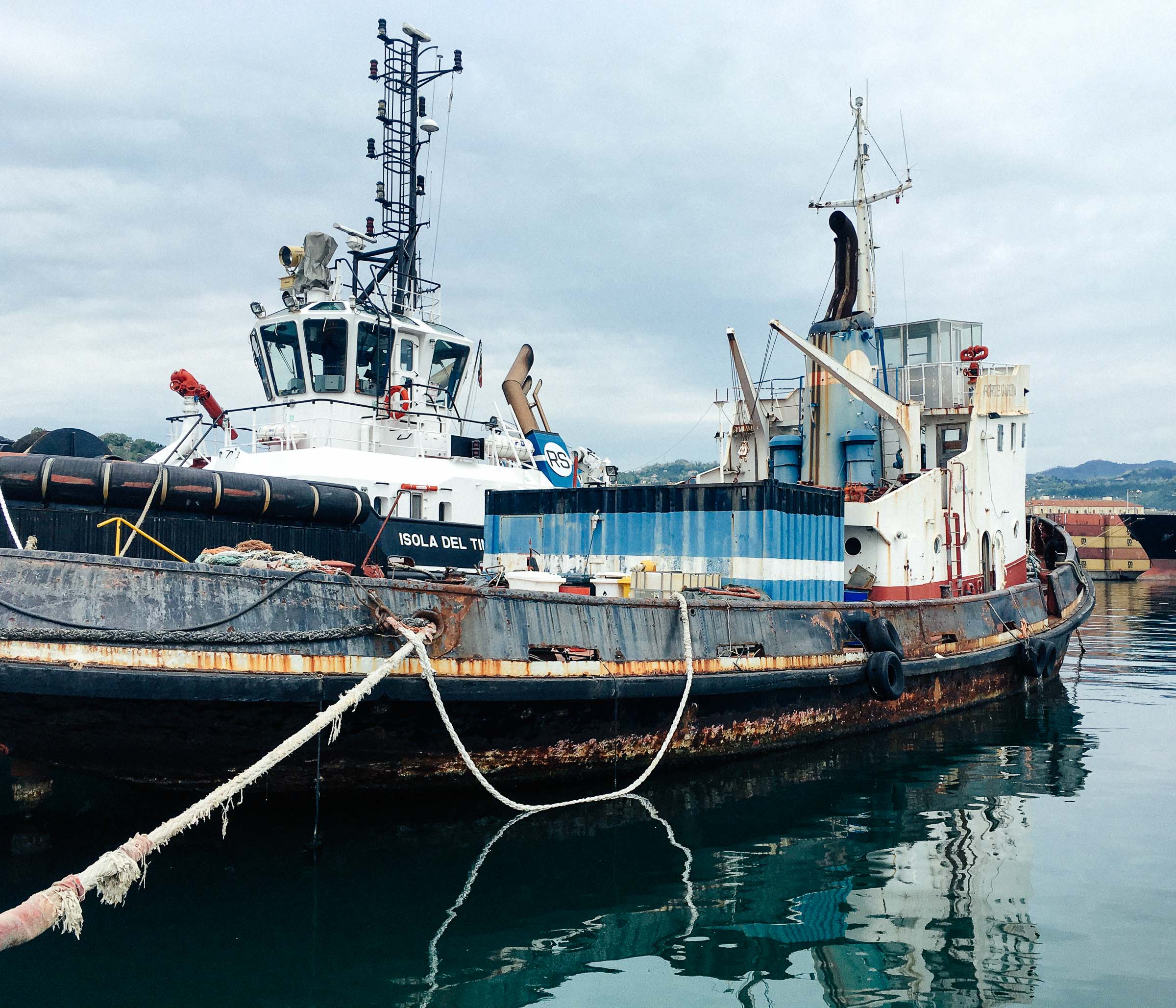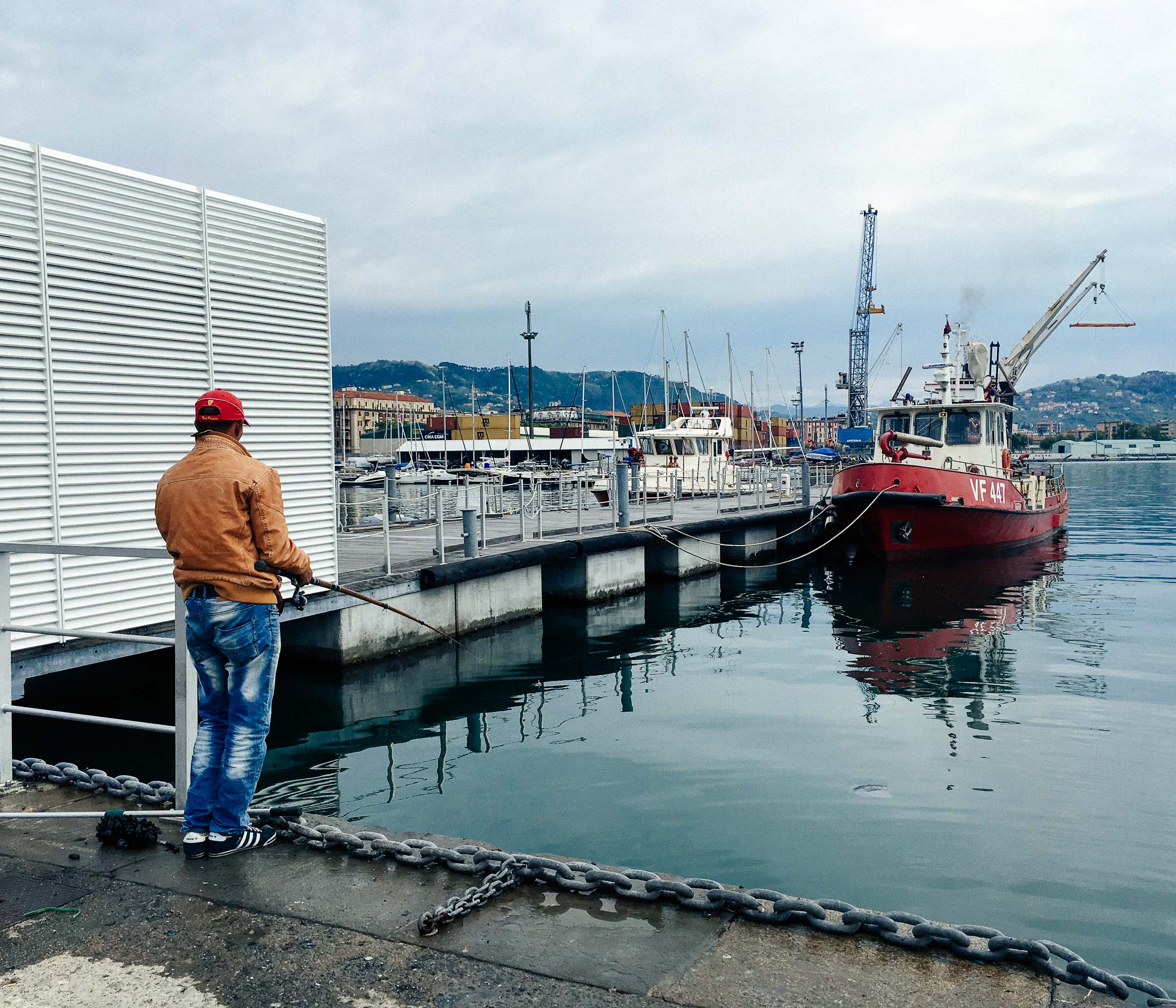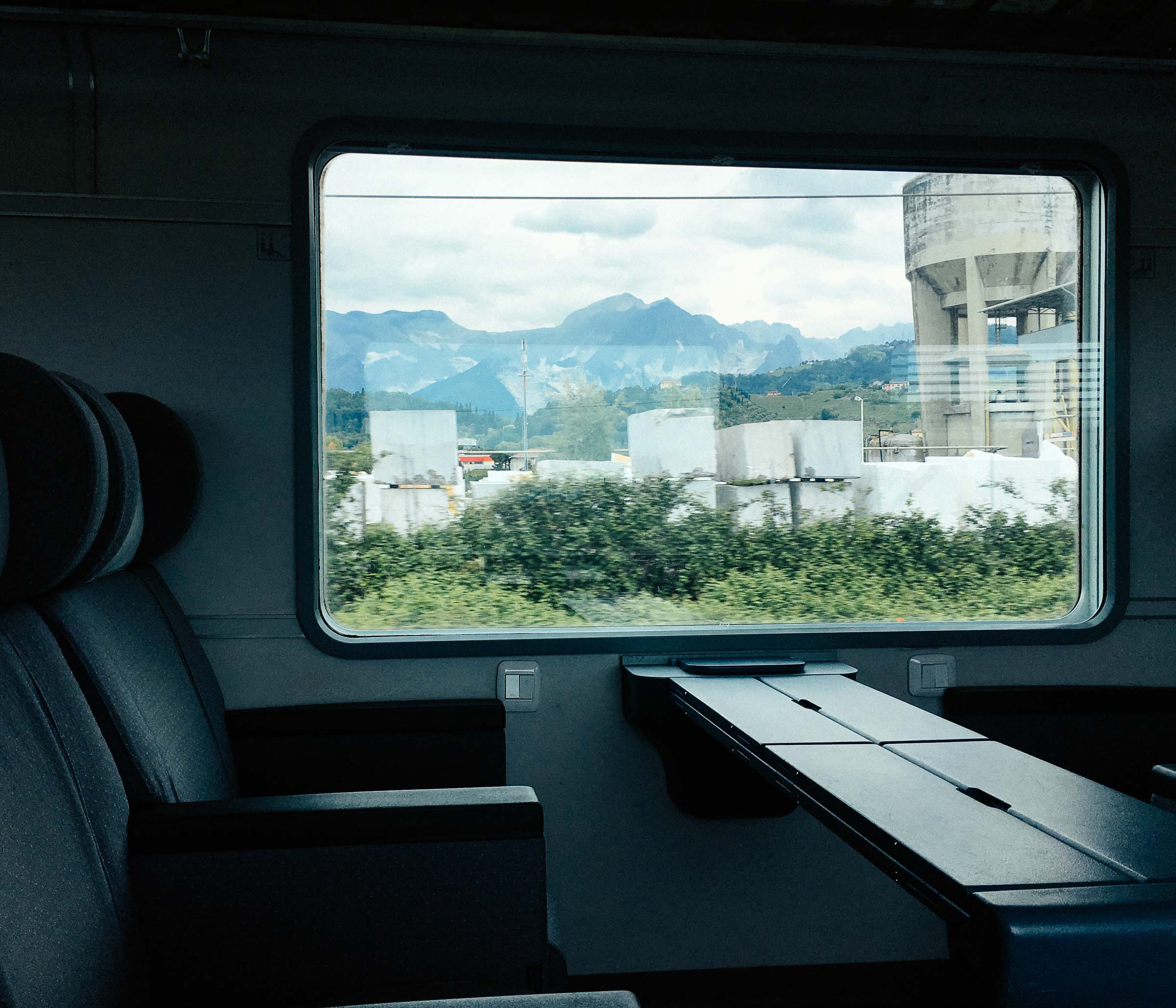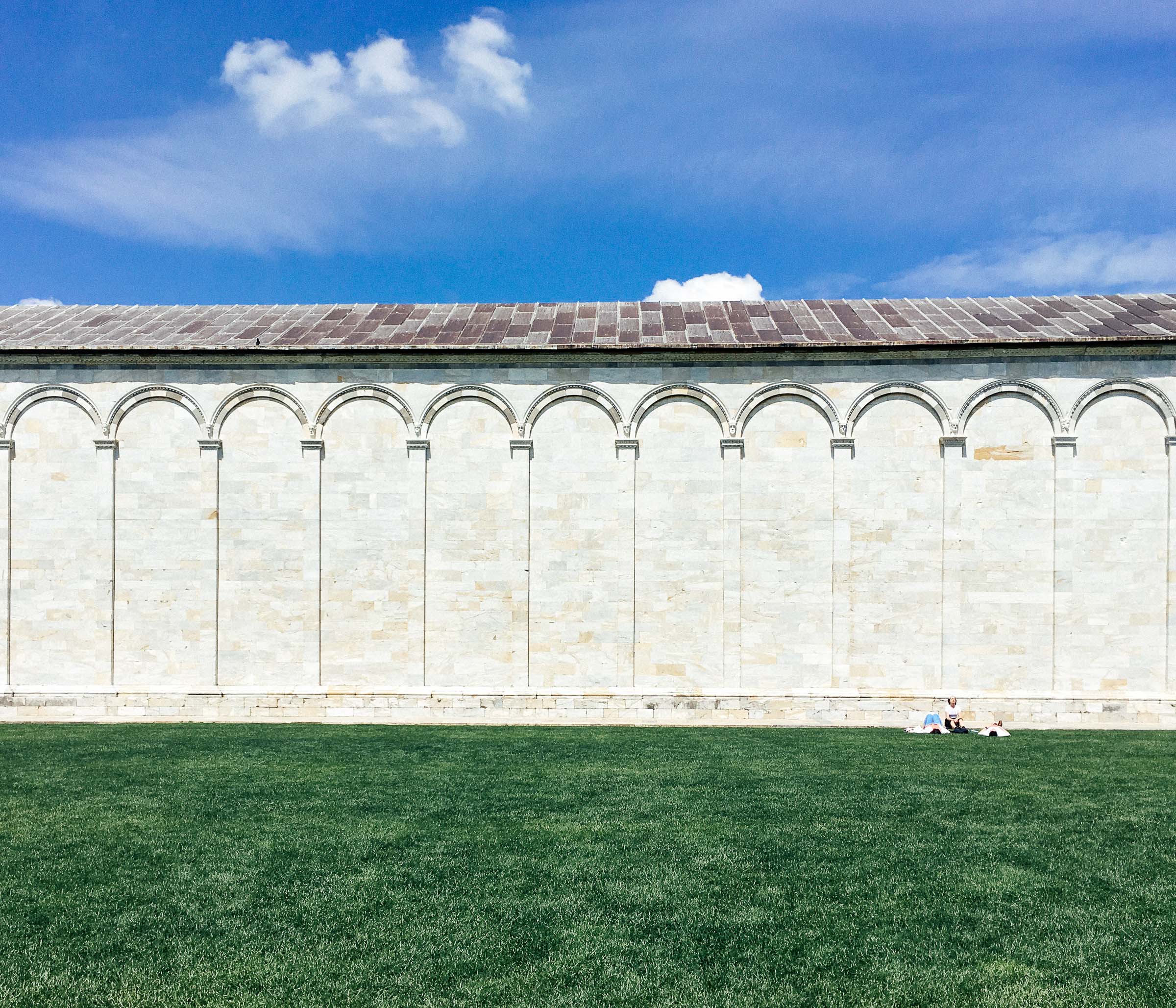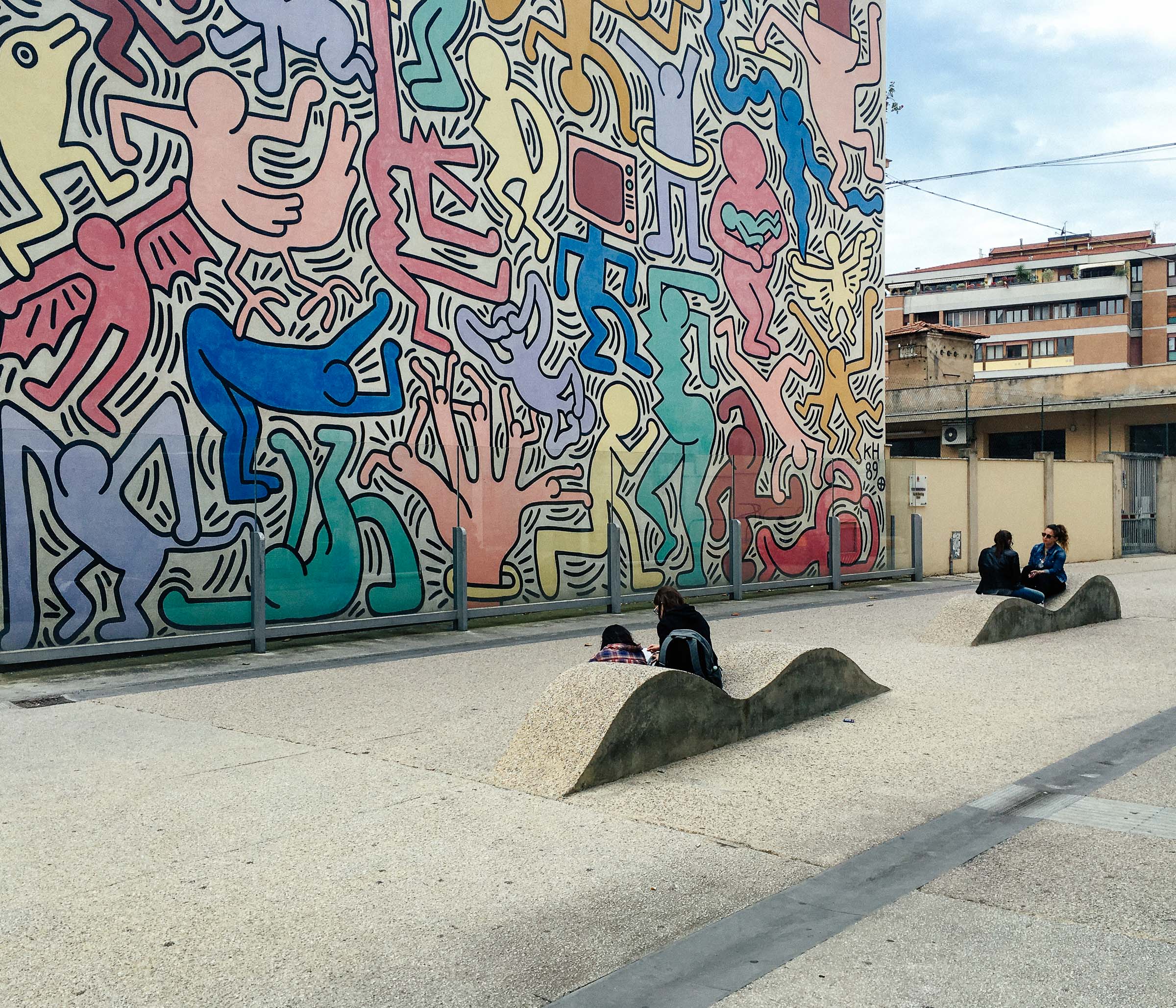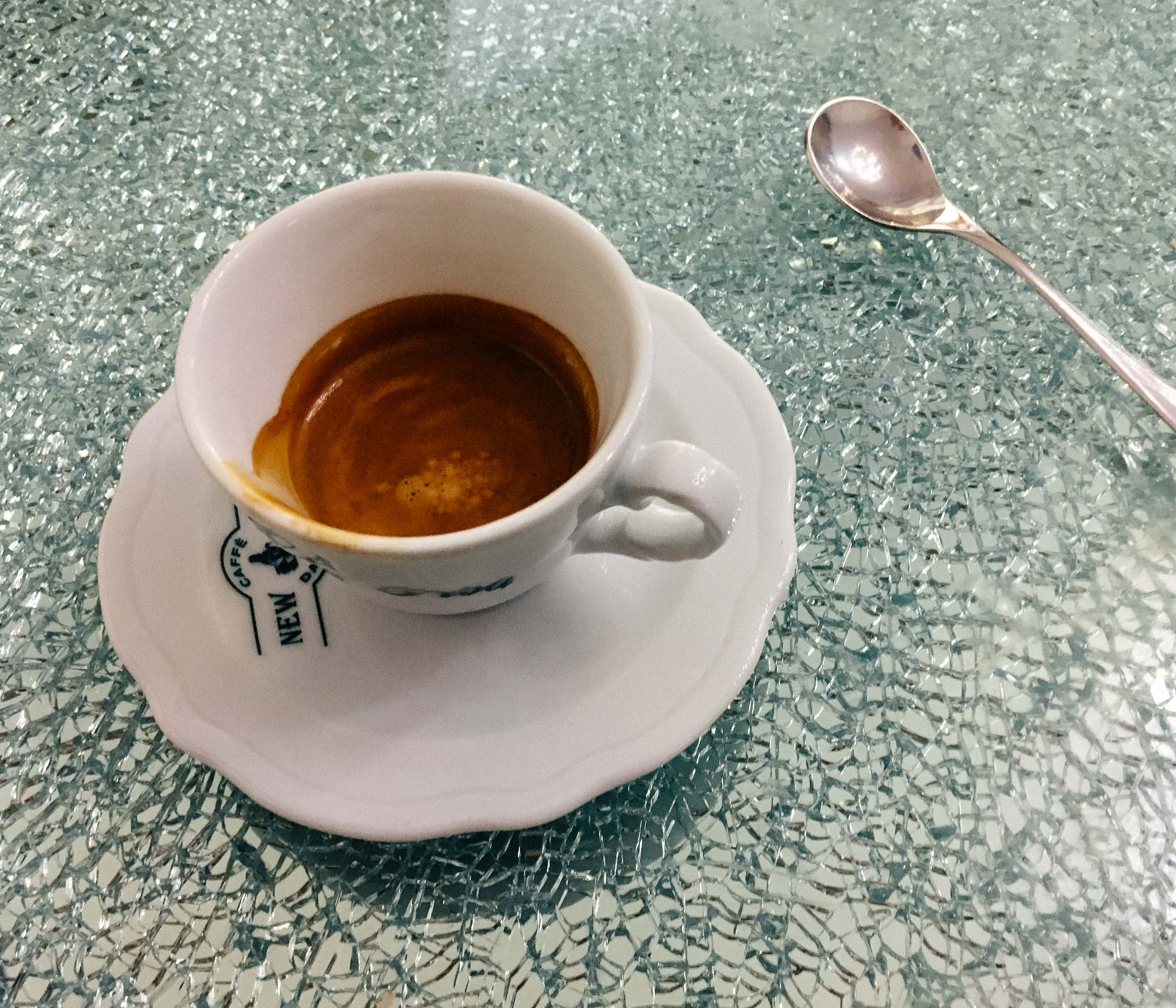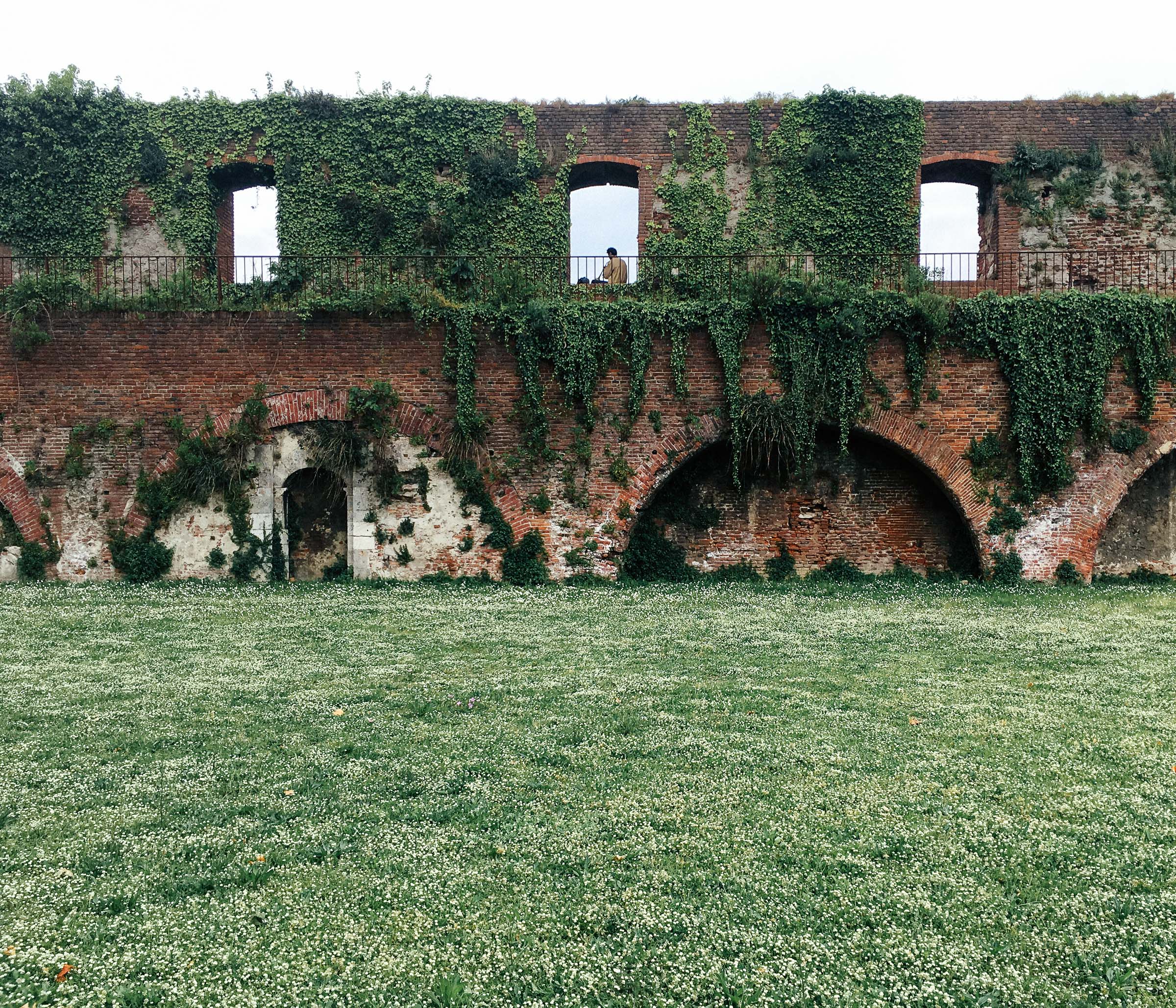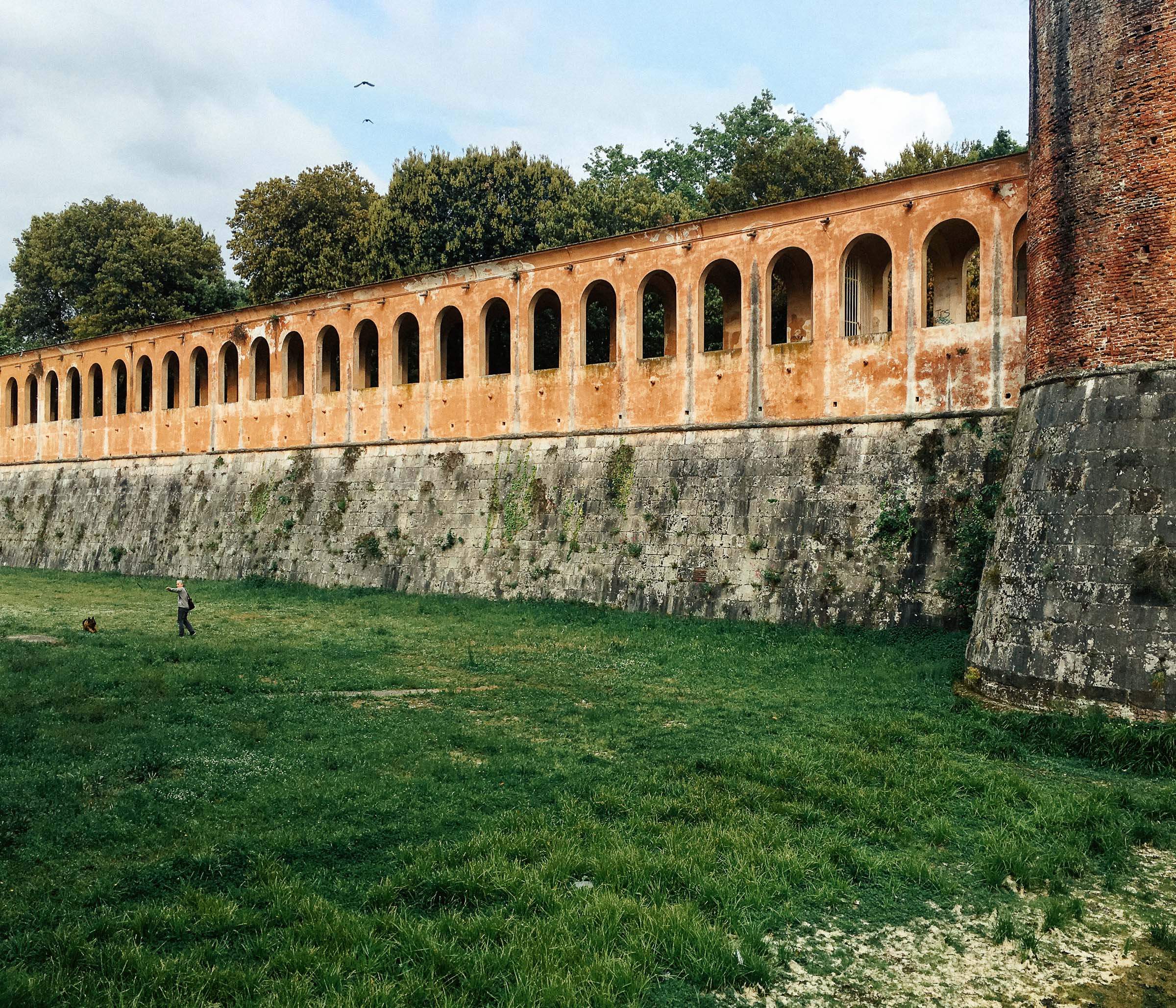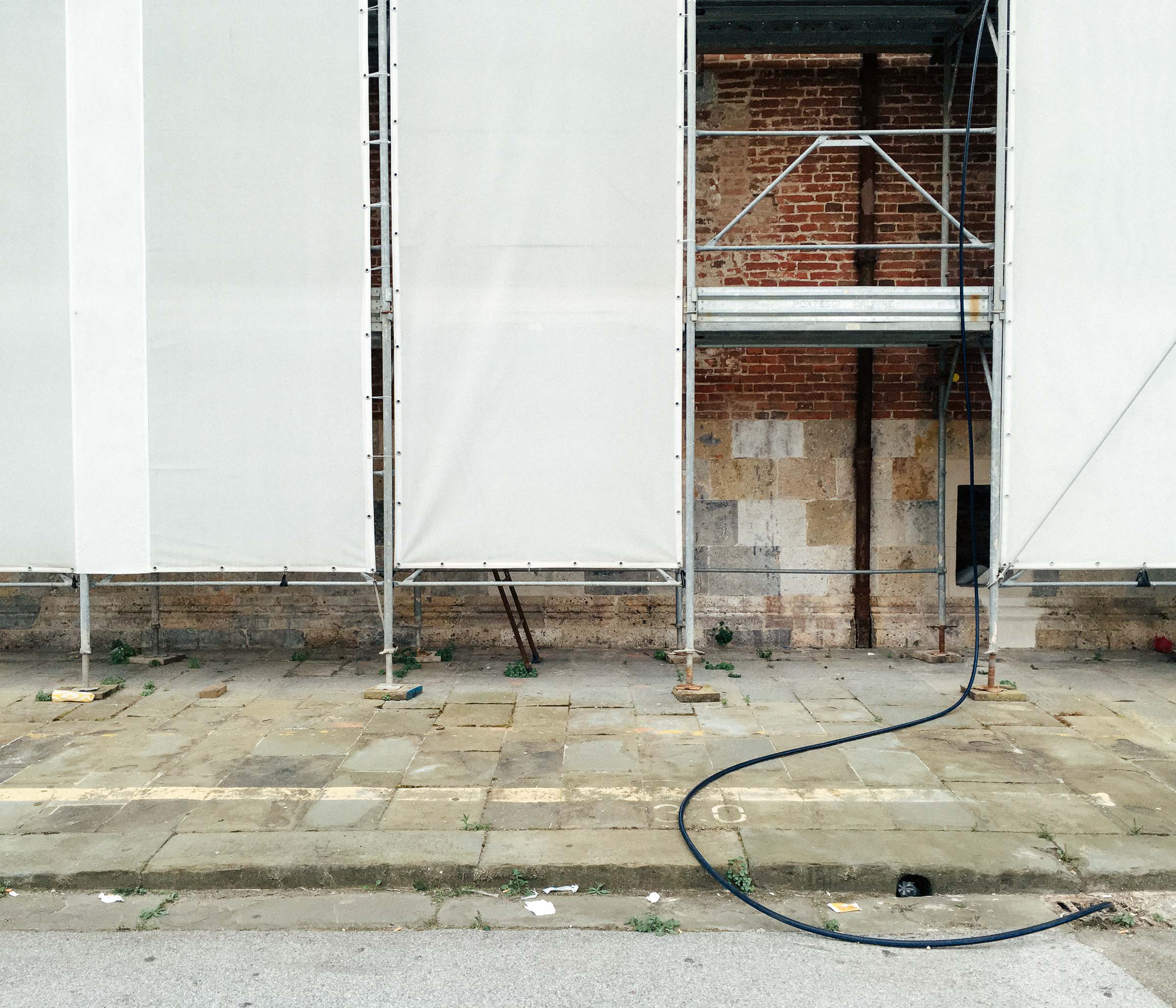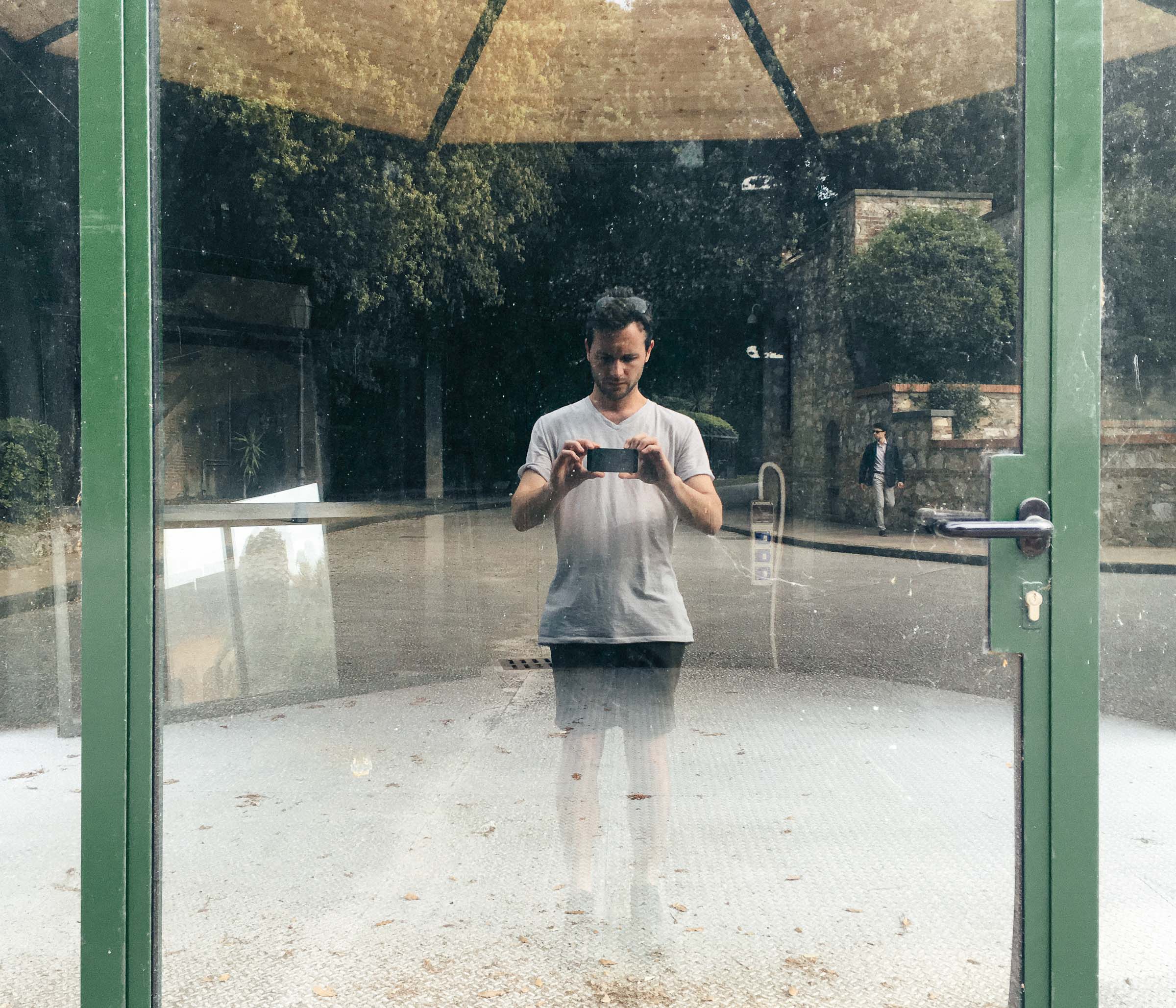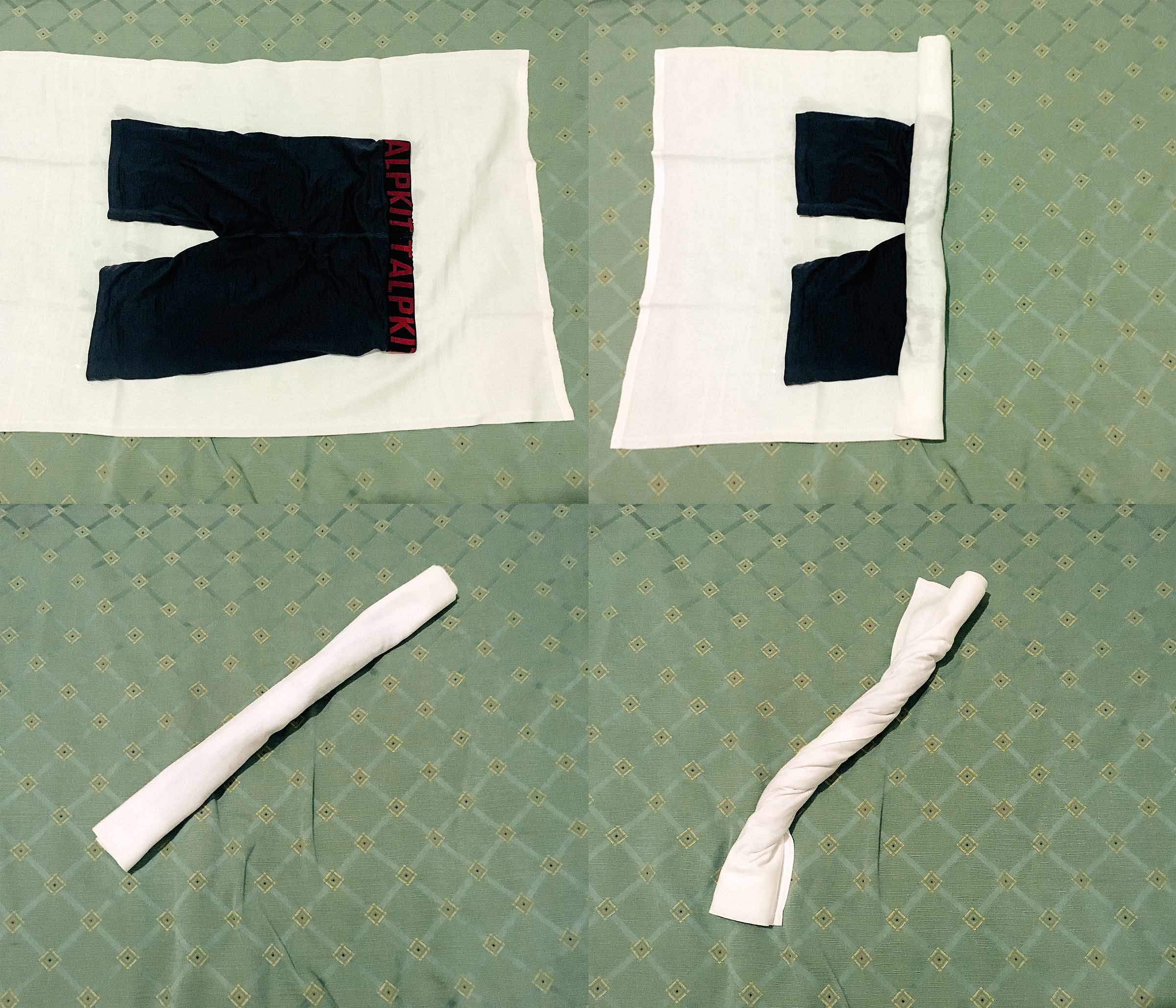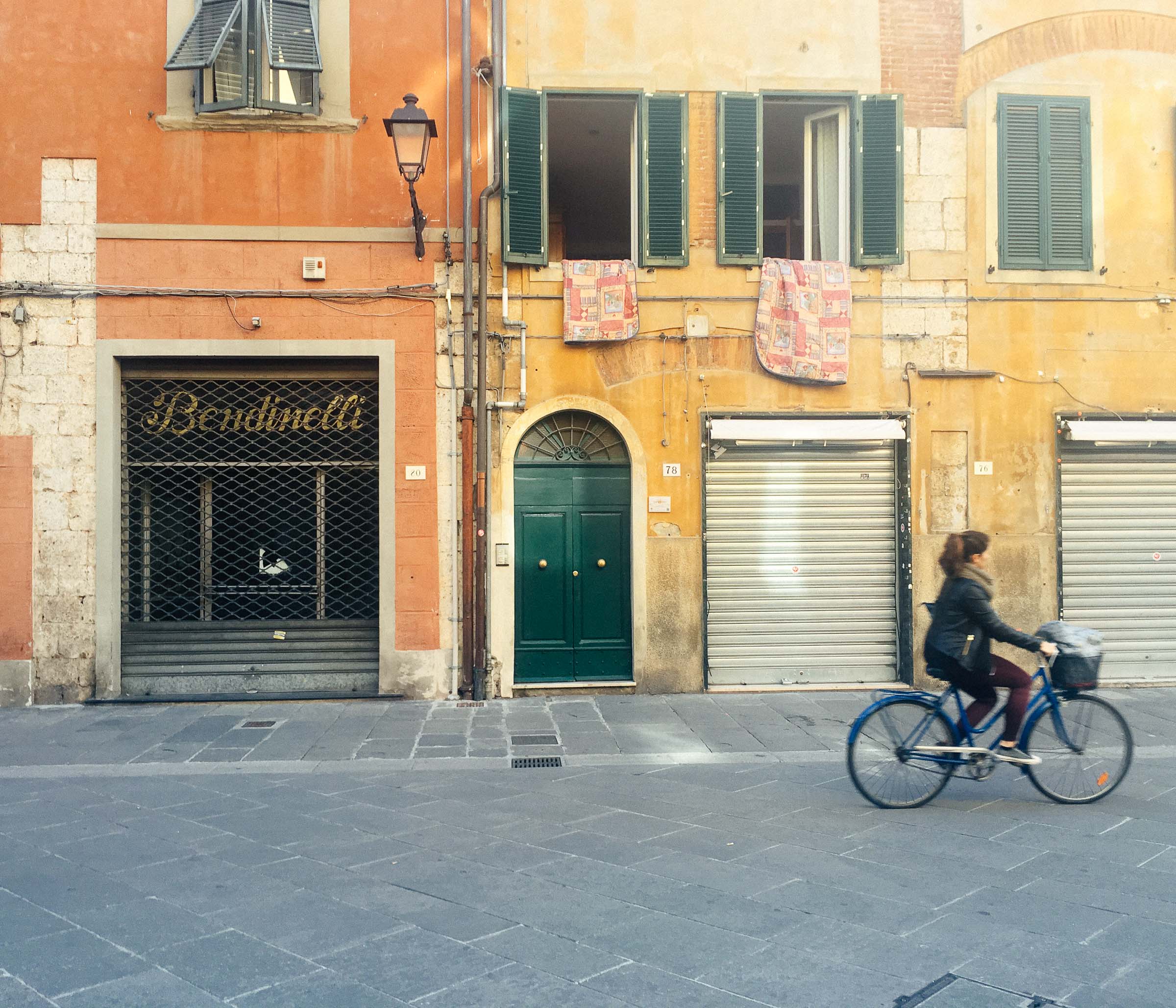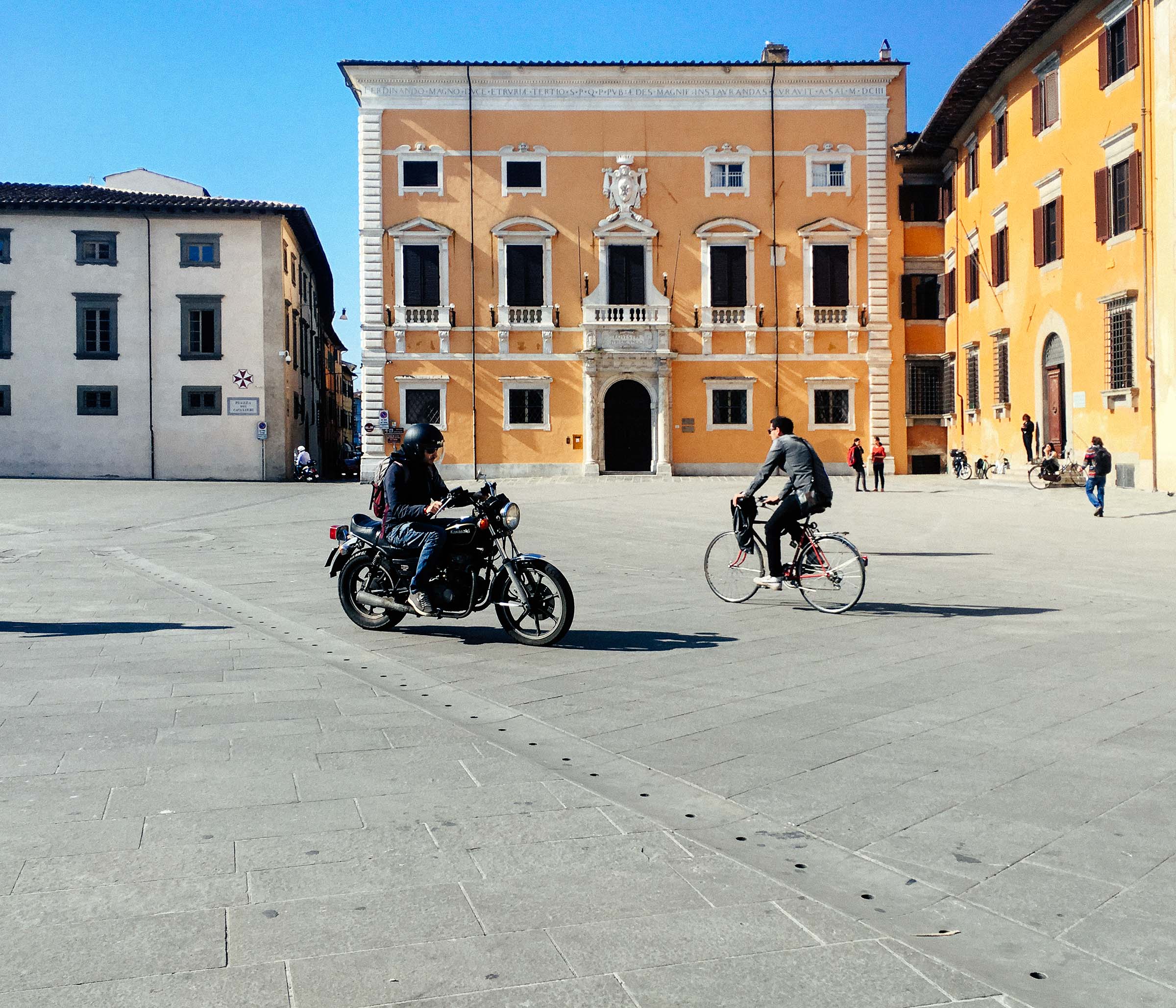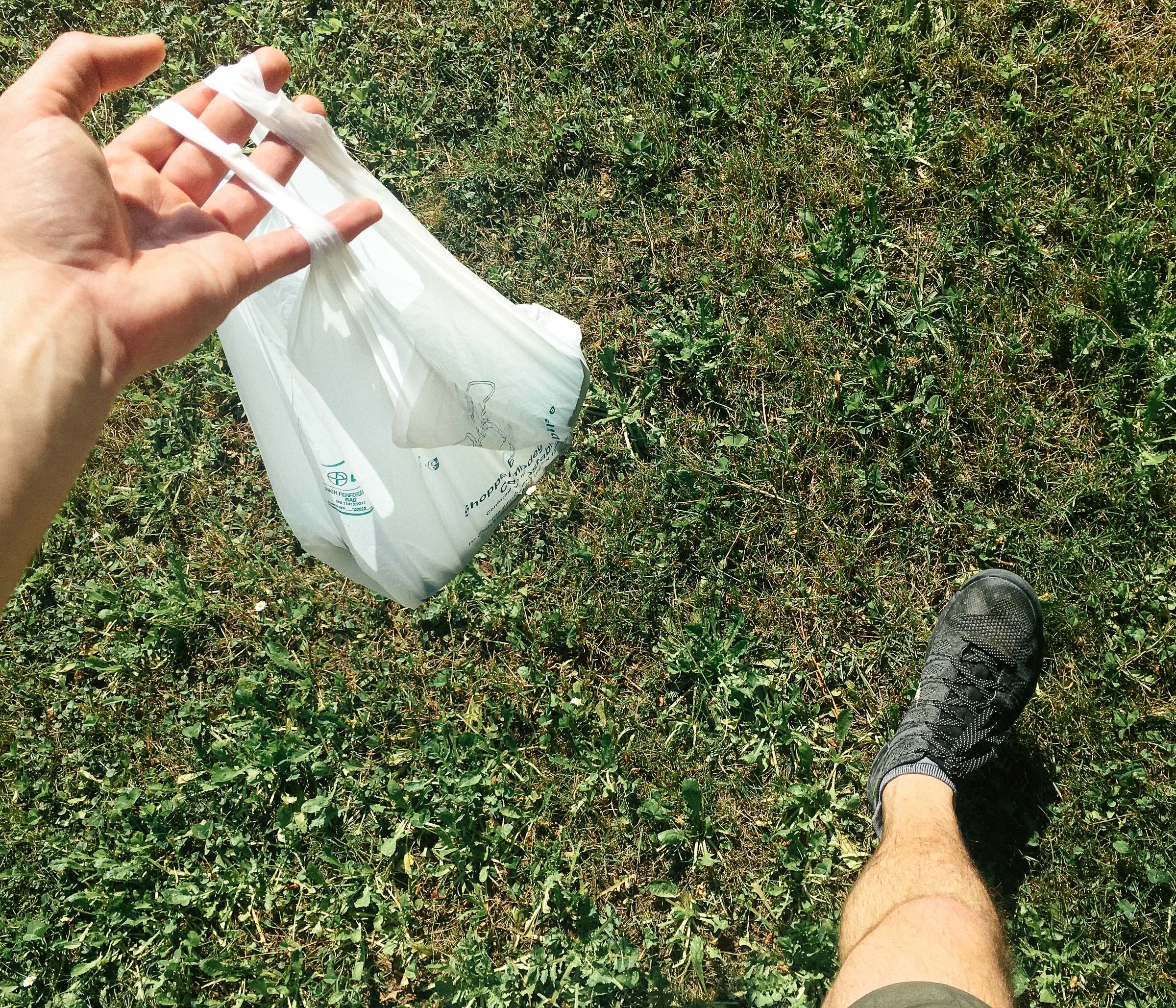I usually travel with minimal luggage. But in the last couple of years my trips have always involved motorbikes, camping, or cold weather. Each of which need special clothing or equipment.
On this trip, none of those things were a concern. So I thought I’d do an experiment to see just how little it was possible to take.
The premise:
- 5 days and 4 nights in Italy
- No luggage or bags of any kind
- No ‘travel’ clothing, e.g. cargo vests or zip-off convertible trousers
- No buying anything (except food, tickets and accomodation)
Here is everything I took:
Clockwise from top left:
- trainers
- sunglasses
- wallet (space for 4 cards and a few notes)
- clear plastic bag (for airport security)
- contact lenses × 7
- toothbrush (cut down on a bench grinder)
- 25ml toothpaste
- waterproof jacket
- merino wool t-shirt
- merino wool underpants
- swim shorts
- merino wool socks
- headphones
- phone (with Maps.me installed)
- passport
- European socket to USB adapter
- USB to lightning cable
—
The night before leaving I slept at my friend Paul’s flat (thanks Paul!) to be closer to the airport. My flight was at 8:30am but nervous anticipation and the summer sky—light so early—had me out of the door at 5:30am.
I left behind a bag containing the clothes I’d worn the previous day. Everything else I distributed amongst my pockets (3 in my shorts and 2 in my jacket). The experiment had begun.
After two buses, three trains, a flight, and many flights of steps I arrived in Corniglia at 3pm. Plenty enough time to walk every street in the village and go for a swim in the sea.
I had three nights booked in a camera (literally ‘room’) in Corniglia. It was big enough for a single bed, wardrobe, fold-out desk and nothing more. I—yawning before sundown—was only interested in the bed. Days with flights are like that.
Before going to sleep I thought to make the most of the early night. Sunrise would be at 6:30am; I set my alarm for 5:30am. You can do that when you travel by yourself.
—
No-one else was awake when I started walking. Away from the streetlights the sky was just starting to colour, as the village gave way to terraces of olive trees and vines.
I had on me: phone, €40, 0.5L bottle of water.
I had in front of me 6km of hiking. Going south, Manarola was the next of the five villages. It wasn’t until I got there that I even saw another person.
In Riomaggiore, the southernmost of the five villages, I kept walking until I felt like not walking any more and looped back. Then I took the train one stop back to Manarola for a late lunch.
I sat on a terrace, slightly above the town. On the opposite hillside a steady stream of people in bright hiking gear were ascending the path towards Corniglia. With another short hop on the train I was back there too.
That evening I got chatting to a couple from Texas. We spent a few hours on the terrace at the end of the village, drinking Aperol Spritzes and eating olives.
They were in Europe for the first time. Their experience was so unlike mine. Everything was new. Their parents were worried about terror attacks because that’s what happens in Europe, on TV at least. But they were here in the world, looking at it, even when they weren’t sure what it was.
Rather than going somewhere unfamiliar, I’d removed the things that make being away feel similar to home. We’re still—the Texans and I—tourists. And that’s OK.
If you go to the same place every year, or have the same holiday in different places then maybe it’s another story. But it’s the excitement of the new that has you standing on a hill with people from all over the world, looking at the same view, as others did yesterday, and still others will do tomorrow.
—
On this day I walked along the coast in the opposite direction, northwest from Corniglia instead of southeast.
As with the previous day I kept walking past the last of the five villages. I started with the intention of going just up the next hill. When I got to the top I carried on out to promontory. Looking back, I could see all every village I’d been to dotted along the coast.
The landscape was rockier and less cultivated. Woodland and scrub clung to the cliffs. It was my favourite of all the paths I’d walked in Cinque Terre.
I kept walking all the way to Levanto, the next town along the coast. It was still fairly early in the day, not yet lunchtime. There were other people on the trail by this time. Most of them were going in the opposite direction, having started from Levanto.
I took the train back as far as Vernazza for lunch, then back further to Corniglia and my hotel room.
I washed my clothes in the sink and left them drying on the balcony, sitting out the hottest part of the day reading on my phone.
—
It was time to go home. I took the Regionale train from Corniglia to La Spezia. With time to spare I wandered through the city and out to the harbour. There’s a lovely anonymity about going somewhere you didn’t plan to. Hidden even from your own imagination.
Back at the train station in La Spezia I caught the Inter City to Pisa. My flight home was just after lunchtime the next day.
I stayed in a serviceable hotel near the leaning tower, which is spectacular in the way that a theme park is.
I wandered the backstreets as the glare of the afternoon turned into the glow of the evening. A smartphone is liberating in that way. You can walk towards a rough congruence of where you want to go and what looks interesting, and every now and then bring up the blue dot to course correct. For better or worse, it would be harder to give up the phone than it was to give up a few changes of clothes.
—
The walk from the old centre of Pisa to the airport took just over an hour. Without a suitcase or a heavy backpack there was no need for the expense of a taxi or the schedule of a bus.
Along the way I broke the no carrying rule. I stopped into a pasticceria and, using my best hand signals and words that sound similar in French and Italian, bought 300g of baked goods as a present for my colleagues.
I put my carrier bag in the plastic tray for its ride through the x-ray machine. It was strange to have something and then be apart from it.
On the plane I tucked it under the seat in front of me. I considered what else it could have held. Maybe some warmer clothes, a book or a proper camera. I considered these things not regretting their absence, but for the possibility that they represented—how little extra would be needed to go somewhere colder or away for longer.
* * *
If you had to carry everything you owned around with you every day you’d probably choose to own a lot less stuff. Imagine taking a full-size, wheeled suitcase to work. Having to find somewhere to put it if you went out for dinner in the evening. Unpacking and repacking. This, somehow, is normal when we go abroad.
On a long journey, the amount carried is always minimal, relative to the number of weeks or months. You’re forced to think about what you need, rather than what you could bring.
These 5 days felt like one of those long journeys. The sense of freedom was the same.
I can’t know whether it would’ve been different with a bag. But I chose Cinque Terre because it was amenable to travelling in this way. And perhaps I loved it for the same reason: that there, I needed nothing else.
* * *
—
